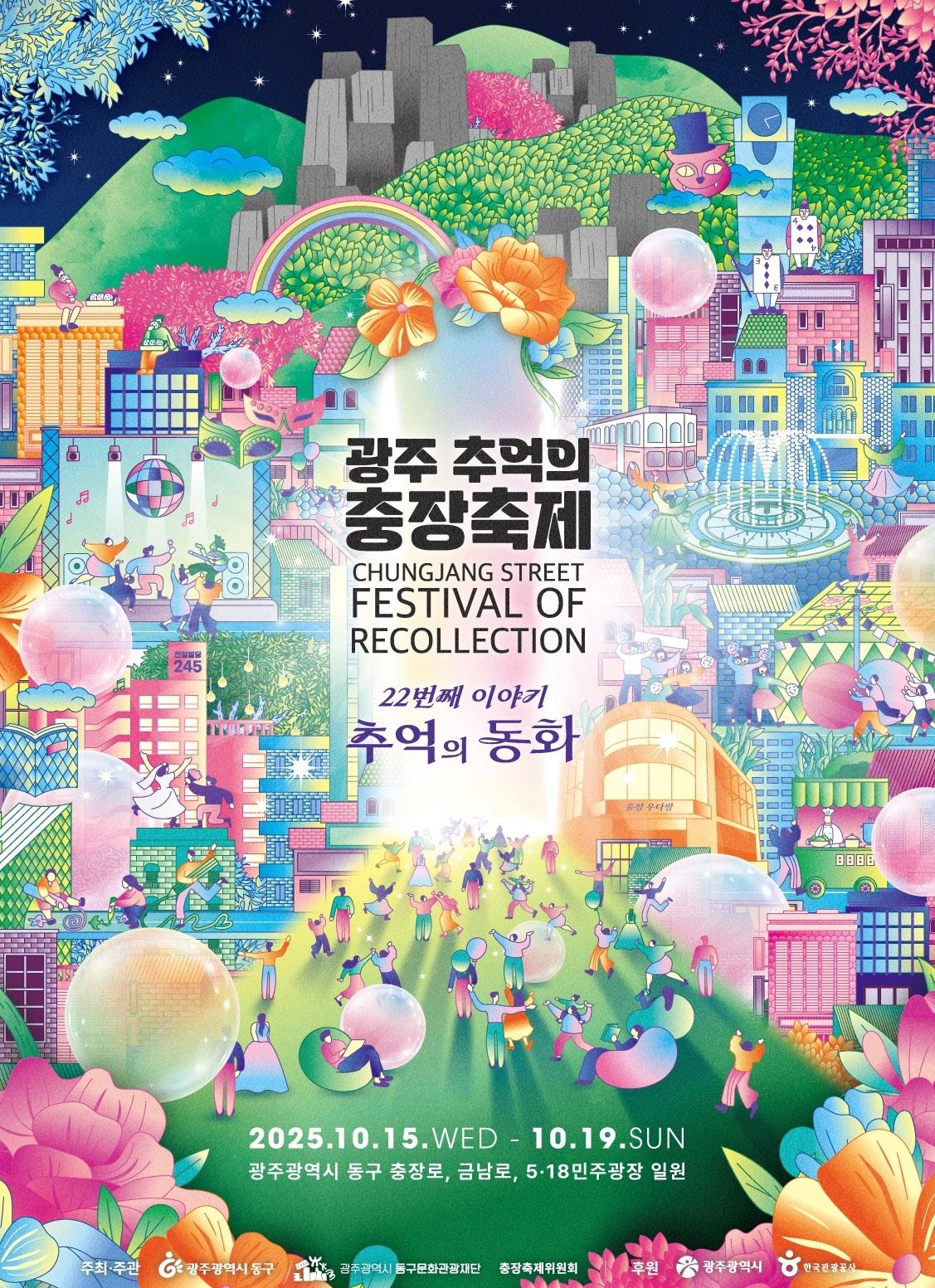

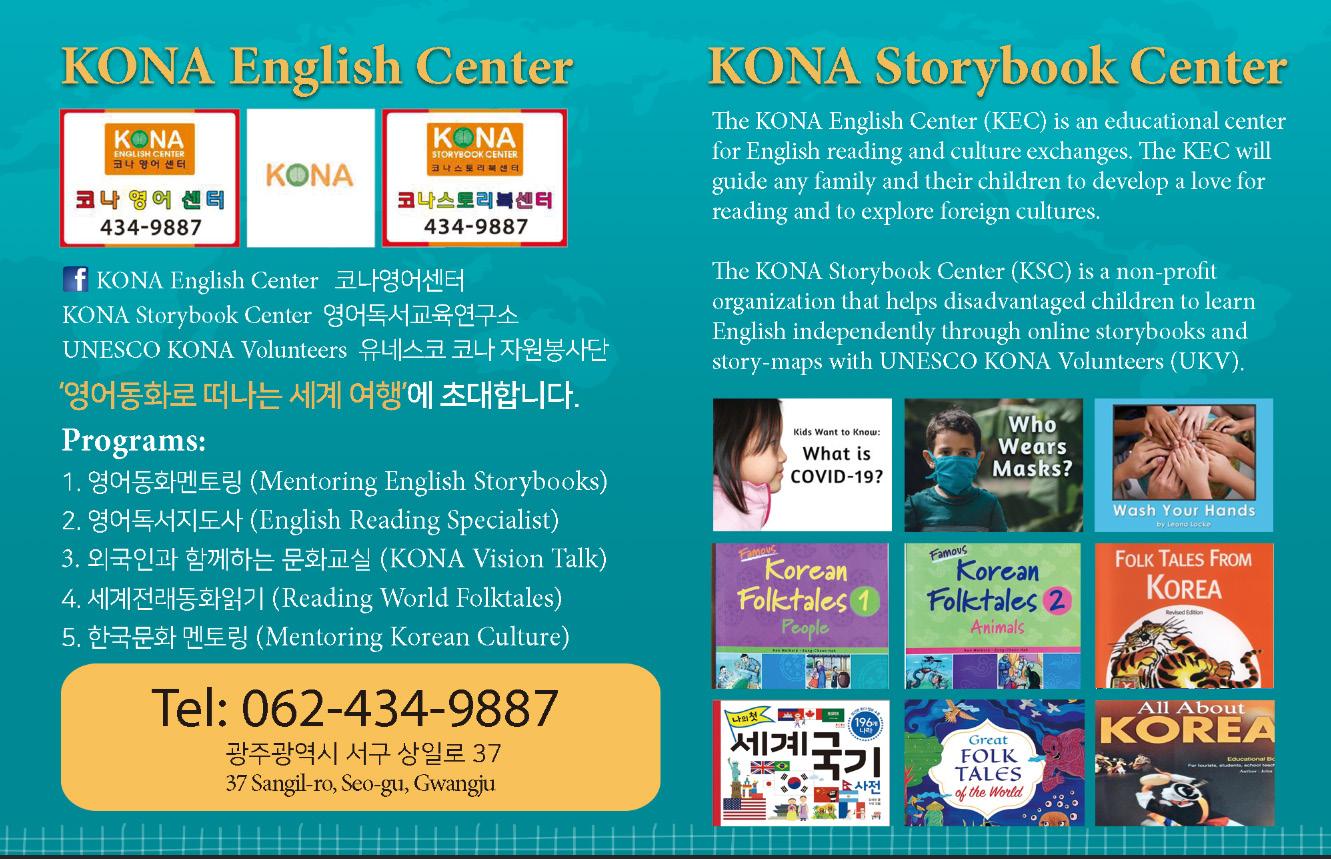
Gwangju & South Jeolla International Magazine




Gwangju & South Jeolla International Magazine

October 2025, Issue 284
Published: October 1, 2025

Cover photo courtesy of the Gwangju Busking World Cup Committee.
Publisher Dr. Shin Gyonggu
Editor-in-Chief Dr. David E. Shaffer
Copy Editing Dr. David E. Shaffer
Layout Editor Johanna Lezada
Online Editor Johanna Lezada
The Gwangju News is the first English monthly magazine for the general public in Korea, first published in 2001. Each monthly issue covers local and regional issues, with a focus on the roles and activities of the international residents and local English-speaking communities.
Copyright ©2025 by the Gwangju International Center. All rights reserved. No part of this publication covered by this copyright may be reproduced in any form or by any means –graphic, electronic, mechanical, photocopying, recording, or otherwise – without the written consent of the publisher.
The Gwangju News is published by the Gwangju International Center: Jungang-ro 196-beon-gil 5 (Geumnam-ro 3-ga), Dong-gu, Gwangju 61475, South Korea
Tel: (+82)-62-226-2733
Fax: (+82)-62-226-2731
Website: www.gwangjunewsgic.com
Email: gwangjunews@gic.or.kr
Registration No. 광주광역시 라. 00145
ISSN 2093-5315
Registration Date: February 22, 2010
For volunteering and article submission inquiries, please contact the editor at gwangjunews@gic.or.kr

Gwangju is known for its ginkgolined city streets, and anyone living here is aware that these shade trees are a harbinger of the robustness of autumn – ginkgo nuts falling to the sidewalks and ginkgo leaves beginning to turn to their golden autumnal hue. They also herald the publication of the October issue of the Gwangju News! We hope you enjoy what this issue and this season hold.
October’s weather is ideal for outdoor festivals, and one of these brings music to Gwangju’s streets: The 2025 Gwangju Busking World Cup. Read about it and some of its contestants in our cover feature. This month also hosts the 1970s and 1980s-themed Chungjang Street Festival of Recollection and the Gwangju Kimchi Festival. Already underway is the Gwangju 2025 Design Biennale [see our Oct. issue]; read our writer’s report on his recent visit to the exhibition [p. 43].
Looking for a calming break from all the festivities? Take a walk through Gwangju’s Penguin Village [p. 20]. Seeking some peace and quiet outside of the city? Head to Gokseong for some coffee in a traditional hanok setting [p. 15]. Or head to Naju for a café with traditional snacks made by “the rabbit in the moon” [D’s Café Column, p. 49]. And if you wish to know more about the writer of this column, Dhivyaa S. P., go to Inside the Gwangju News [p. 27].
There is so much more to discover. What tragic secret does Yeosu hold [p. 13]? Why isn’t Subway Line 2 finished [p. 25]? What do Hiroshima and Gwangju have in common [p. 22]? What surprises does China hold for a first-time visitor [p. 17]? How can the KIIP benefit the expat [p. 29]? Can adults acquire a second language [p. 31]? What are expats looking for in a healthcare provider [p. 33]? How is a doctoral researcher’s findings like chocolate cake [p. 36]? And why are the Kia Tigers in freefall [p. 52]?
Read about Gwangju’s vintage clothes market [p. 38]. Learn about a traditional indigo dyeing summer camp [p. 40]. Hear what the new international grad students face [p. 19]. See what this month’s upcoming events are [p. 56]. Find out what a Brazilian thinks of Gwangju’s sports fans [p. 50].
City News is on page 3. Our book review this month is about The Plotters [p. 47]. Our creative writing piece is on The Subway [p. 45]. And our Sports Round-Up follows the Kia Tigers, AI Peppers, and Gwangju FC [p. 54]. Enjoy!
David E. Shaffer Editor-in-Chief Gwangju News

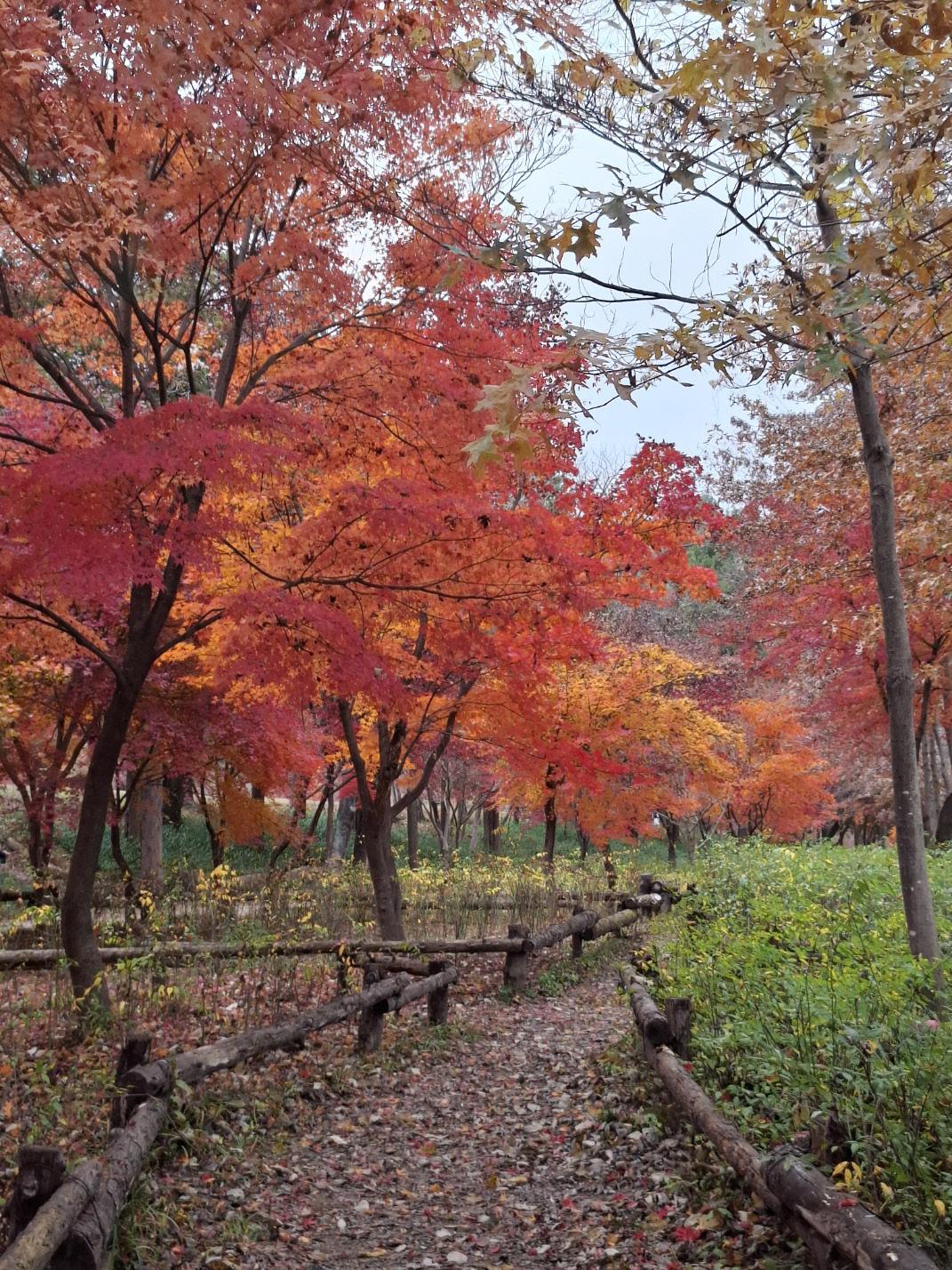
Beneath autumn’s canopy of red and gold, the path forward glows with quiet promise. Though change may feel heavy, every falling leaf whispers resilience, teaching us that endings carry beauty and beginnings wait just beyond.

The Photographer
Arum Ayuningsih, from Indonesia, finds joy in photography as a way to capture beauty in its many forms. She is particularly inspired by sceneries, where each setting and moment reveals a unique charm, turning ordinary views into lasting impressions.
Photographed at Nami Island, capturing autumn’s vibrant colors that reflect the timeless beauty of seasonal change across Korea.
31 Teaching Old Dogs New Tricks: Adult Language Acquisition
HEALTH & WELL-BEING 33 Empathy and Gwangju’s Immigrants
Music in the Streets: Gwangju’s Busking World Cup 2025

& TRADITION
Ponderings & Contemplations: Yeosu – A Storied City
Exploring Korea: Coffee in a Hanok –Tradition Preserved in Gokseong-gun
China Impressions: Falling for the Charm of a Neighbor
Welcoming Global Students: A Call for Gwangju’s Open Arms
Gwangju’s Penguin Village: A Walk Through Time and Art
Friendship Cities: Gwangju and Hiroshima – Japan’s Shared Vision for a More Peaceful and Just World 25 Still Not Finished: Subway Line 2 Delays Continue
Inside the Gwangju News: Café Connoisseur – Dhivyaa S. P.
& LEARNING
Korean Immigration and Integration Program (KIIP): A Pathway to Life, Work, and Residency in Korea
SCIENCE & TECHNOLOGY
36 Making Science Simple: A Chocolate Cake that Powers the Future
OUR ENVIRONMENT
38 Reusing Before Recycling: Growing Used Goods Market
CULTURE AND THE ARTS
40 My Indigo Dyeing Volunteer Camp: A Summer of Blues and Greens
43 Inclusive Design, Selfie Spots, and a Hint of the Future: Gwangju’s 2025 Design Biennale
45 Creative Writing: The Sheep, The Seat, and The Subway – Hurry, Hurry – But Why?
47 Book Review: The Plotters
FOOD & BEVERAGE
49 D’s Café Column: Café Grain Mill Daltokki – Discovering Traditional Korean Snacks in Naju
SPORTS & ENTERTAINMENT
50 A Brazilian in Gwangju: Fan Support for Their Teams
52 From Super Team to Structural Failure: The Fall of the Kia Tigers
54 Area Sports Round-Up
56 October Upcoming Events
Photo credit: Helicopter Secondhand
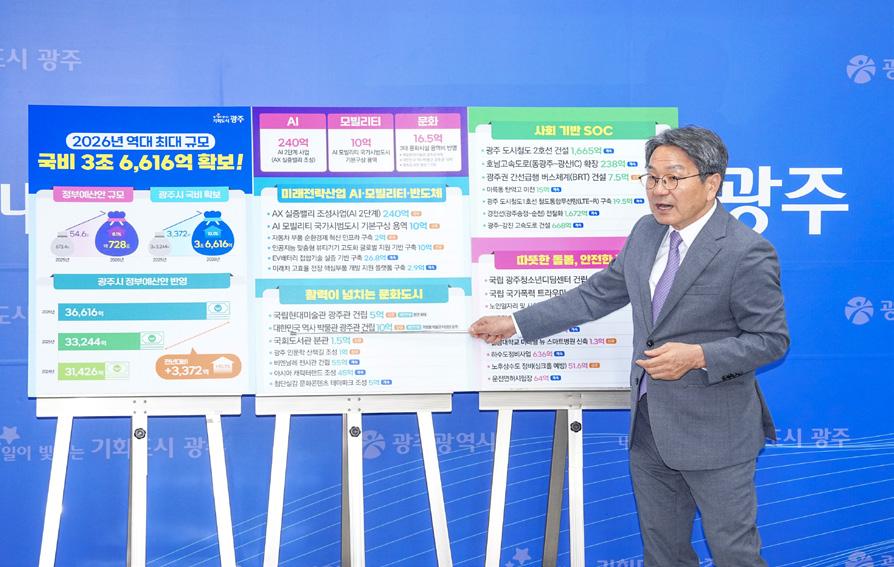
Gwangju Metropolitan City announced on August 29 that 3.6616 trillion won has been allocated to regional projects in the government’s 2026 budget, the largest amount in the city’s history. The allocation is 337.2 billion won (10.1%) higher than last year and 275.8 billion won (8.1%) above the National Assembly’s final approval, surpassing the national budget growth rate of 8.1%.
Key projects include Phase 2 of the artificial intelligence (AI) initiative, a master plan for the AI Mobility National Pilot City project, and feasibility studies for three national cultural institutions: the National Museum of Modern and Contemporary Art, the National Museum of Korean History, and a branch of the National Assembly Library. The city expects the funding to drive future industry growth and enhance cultural infrastructure.
Gwangju Metropolitan City’s breakfast support program for industrial complex workers has
been adopted as a national policy under the Lee Jae-myung administration. Since March 2023, the city has provided affordable meals, such as gimbap and sandwiches at about half the market price, serving around 200 meals daily with high satisfaction.
The initiative, launched first in Hanam Industrial Complex and later expanded to the HighTech Complex, improves worker health while supporting local agriculture through partnerships with the National Agricultural Cooperative Federation. Recognized as Korea’s first of its kind, the program has become a model for other cities and a leading case of innovative labor welfare.

Gwangju Metropolitan City and the Gwangju Bar Association take the lead in protecting the rights and interests of foreign residents. Gwangju Metropolitan City announced that the Gwangju International Residents Center (GIRC) and the Gwangju Bar Association’s Migrant Legal Support Group signed a memorandum of understanding (MOU) at the Gwangju District Attorney’s Office. The agreement aims to ensure the rights of international residents in Gwangju who face
challenges due to limited legal knowledge, while providing them with professional and systematic legal assistance.
The GIRC has been running various programs to protect the rights of migrant workers and other foreign residents. These include multilingual human rights counseling, a monthly One-Stop Counseling Day with invited lawyers, workplace safety and labor rights education, and support for obtaining driver’s licenses and forklift certificates. The center also promotes community integration through cultural and sports activities.
Under the new agreement, the two organizations will strengthen cooperation by expanding services, such as legal counseling and representation for international residents, interpretation support and lawyer dispatch, rights-awareness education, and emergency legal assistance.

Gwangju Metropolitan City will raise the Sangsaeng Card discount from 7% to 13% from September through December, marking the largest-ever promotion. The four-month initiative aims to boost the local economy affected by recent heavy rains and heatwaves, and to support small businesses. In disaster-affected areas, users of the Sangsaeng Check Card will receive an additional 5% cashback.
Residents can recharge up to 500,000 won per month, receiving up to 65,000 won in discounts. Cards can be recharged online, via mobile banking, or at any Kwangju Bank branch.
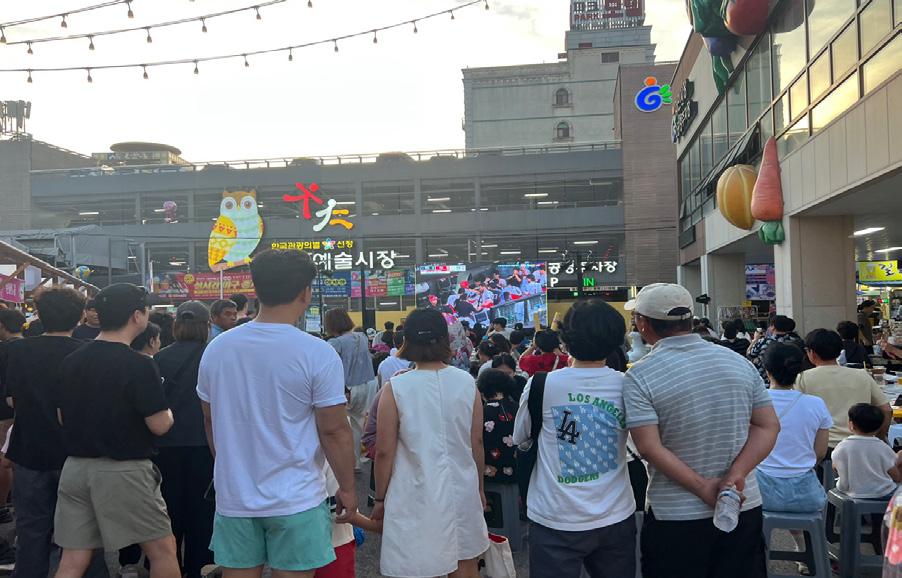
From September 6 to November 22 (excluding Oct. 4 and 11), Gwangju City will hold 10 sessions of the Daein Art Night Market every Saturday from 6 to 10 p.m. The market features performances, exhibitions, and hands-on experiences, linking major events like the Gwangju Design Biennale and the World Archery Championships.
Newly developed food items, including the owlshaped “Aulre Bread” and matcha makgeolli, will debut. Performances range from live guitar and acoustic duos to bubble magic shows and citizenparticipation busking. On September 13, a live broadcast of the Kia Tigers–LG Twins game will be shown, with food tasting coupons for fans in Kia uniforms.
Gwangju City is presenting the fall edition of its “Culture on the Move – With You” program from September through November, with 31
performances across six city parks. Programs include opera, theater, and street performances.
Performances will be held on the 1st and 3rd Saturdays at the ACC Imagination Hall in Donggu, Puren-gil Park in Nam-gu, and Unnam Neighborhood Park in Gwangsan-gu, and on the 2nd and 4th Saturdays at Sangmu Citizen’s Park in Seo-gu and Yangsan Lake Park in Buk-gu.
Cultural officials aim to offer city residents small but meaningful cultural experiences, building on the highly successful spring program, which drew 257 local artists and 97.5% audience satisfaction.

Gwangju Metropolitan City announced on September 2 that it has completed the replacement of 15,076 aging seats at Gwangju Kia Champions
Field, significantly improving safety and comfort for baseball spectators.

The project, launched to upgrade seats installed during the stadium’s opening in 2014, involved replacing seat boards, backrests, and cup holders while keeping the existing frames. The new seats are wider for better stability and comfort, with colors and design matching the original look. The project was part of a partnership agreement between Gwangju City and the Kia Tigers, initiated last October to promote local sports culture.

Charlene Lee is the founder of Charlene English Institute. Having lived in many different countries, she loves to explore and experience diverse cultures. She hopes to contribute to making Gwangju a more vibrant city.

By David J. Richter
This year, the city of Gwangju is hosting the 4th Gwangju Busking World Cup. The event is being held from October 15 to 19 (Wed.–Sun.) for a total of five days in the Donggu area, including the May 18th Democracy Square. It describes itself as “a salad bowl-style music festival, filled with the fun of choosing and enjoying.”
The tournament goes through a total of four stages, starting with an elimination stage, where teams will be narrowed down to a total of 32 teams that will be entering the round of 32. Starting from this round of 32, teams will perform on the main stage. After the round of 32 concludes, only half the teams will be allowed to advance to the next round, the round of 16, which again takes place on the main stage. Lastly, the final stage will showcase 5 teams, followed by the ceremony presenting the winners.
But that is not all. Invited guest artists will perform after the conclusion of each round, a flea market is organized to run in line with the World Cup, a promotion booth is ready with fun activities, and teen busking bands will be performing as well – all this for free. Gwangju Busking World Cup 2025 is bound to be a fun time for all again this year, so we invite all readers to give it a try.
To give you some deeper insight into the busking event before it begins, we have interviewed two of the participating guest artists: Maura Delgrado from Cape Verde and Supicha Teddaroon (Cha), manager of the Thai group Helicopter Secondhand.

Maura Delgado is a Cape Verdean artist living in Massachusetts in the United States. She presents a rich blend of jazz, Afrobeat, and R&B, mixed with traditional Cape Verdean sounds in the music she plays. Maura manages to captivate listeners through her soulful voice, which has given her the chance to perform in seven cities across three continents. “There is no better feeling and inspiration than seeing that genuine smile on people’s faces, a smile put there simply by your art,” she relates.
Maura did not grow up making music, rather just with music, which changed when she participated in Camp EP in 2022. Through this, she started to find her musical creativity, kick-starting her musical career. Since then, she has been able to perform, for example, in Barcelona, Boston, and Santiago, Cape Verde. Maura keeps impressing audiences through her musical authenticity and her stage presence. She is committed to sharing her unique take on music, shaped by various cultural influences from around the world.
Here is our interview with Maura:
GN: If “Maura Delgado” is a stage name, how did that name come about?
Maura: Maura Delgado is not only my stage name but also my legal name. Initially I thought of choosing a more artistic moniker but realized that my own name would suit me best. I learned that creating music and living in it, and from it, is who I am. Therefore, I choose to be fully me on and off stage, which to me also meant keeping my legal name as my artistic one.
“And I am truly hoping we get to experience each other in the best way possible.”
GN: Why did you go into busking rather than doing gigs in bars and other places?
Maura: Luckily, I am able to do both. I still do other gigs. However, I have this feeling in my heart that my voice deserves to be heard by different cultures and different places, which is why I decided to go into busking. To me, it’s a way of pursuing what I believe in – it’s a way of making a change in me.
GN: How did you hear of the Gwangju Busking World Cup last year?
Maura: In 2024, I was blessed to be accepted into the Atlantic Music Expo in Cape Verde. That was my first experience with a showcase, and guess what, I fell in love. There, I met many people who in a certain way directed me to the Gwangju World Cup, more specifically Cape Verde’s Minister of Culture and Creative Industries, Augusto Veiga.
GN: Did you also travel to other cities or countries for busking, or do you stick to your home base?
Maura: The Gwangju Busking World Cup is the second one that I have been accepted to. Although, I have applied to different ones, for those, I am still waiting for their response. I will also be in Rabat, Morocco, for Visa for Music.
GN: What do you expect from this year’s Gwangju Busking World Cup?
GN: How did you start off making music?
Maura: Music has always been a part of my life. I didn’t grow up making music, but I did grow up with music. Being the only one who could sing in the family, I was always the one singing in family gatherings and school activities. But it wasn’t until I was invited to participate in a project (The Camp 2021) that I took my first step into the music world. There, I had the chance to create music and record for the first time. It was love at first sight. From there, I had a lot of challenges until I got to where I am today, where I am finally able to pursue my music career.
Maura: From the bottom of my heart, I expect only great outcomes from this experience. Of course, I expect the best performance from myself, but also I am hoping that I get to meet great and talented people. This being my first time in South Korea, it’s already a big thing to me, and the fact that music is what is taking me there is a huge thing. So, I already know the experience is going to be worth it.
GN: What would you want to say to other busking groups out there that are curious about the Gwangju Busking World Cup?
Maura: I would tell them to take a chance on themselves. You have to trust and believe. When I applied, I prayed and trusted I would get picked…
look at me now. Don’t doubt yourself, and even if you do, still do it. What is meant for you will come to you, you just need to do your part.
GN: What would you like to say to Gwangju residents and other potential attendees for this year’s event?
Maura: To the Gwangju residents, I would like to say thank you for welcoming me into their home to show my talent. And I am truly hoping we get to experience each other in the best way possible. And to the potential attendees, I would say, allow yourself to enjoy it to the fullest, as an artist but also as an individual. At the end of the day, the artist we become and the art that we make comes from the adventures we allow ourselves to experience.
Helicopter Secondhand, from Chiang Mai in northern Thailand, consists of three long-time friends who have been playing music together for several years. The band members include Pod (lead vocalist, songwriter, guitarist), Bas (drums, percussion, vibes), and Jack (bass, didgeridoo). Their music is an intriguing fusion that blends contemporary Western pop-rock elements with the rich and diverse musical flavors of world music, including influences from Africa, the Americas, and the traditional sounds of Thailand’s rural areas. Their repertoire includes instrumental compositions that are delightful to listen to, as well as tunes that make you want to get up and dance. They also have songs with abstract lyrics that are easy to sing along to, inviting everyone to have a great time with their music.
They’ve performed on various stages – from intimate street corners to major festivals, such as Bangkok Design Week and the Kunming Coffee Festival in China. Their music resonates with a wide audience, blending heartfelt storytelling with accessible soundscapes.
This year, Helicopter Secondhand is returning to South Korea, driven by a strong desire to
share their songs with people across languages and cultures – one stage at a time. Here is our interview with Manager Cha.
Gwangju News (GN): Your group is called “Helicopter Secondhand.” How did that name come about?
Cha: In our hometown, which is in a remote district, besides the sound of airplanes, there’s also the sound of helicopters, which excites the kids. It’s a strange sound. Most helicopters in the Thai military are secondhand, so we used that as our band name.
GN: How did you guys meet each other and how did you start off as a band?
Cha: We have been old friends for over 10 years and have always jammed together, so it wasn't difficult to get the band together to get serious.

GN: Why did you go into busking rather than doing gigs in bars and other places?
Cha: In Thailand in the past, bars, pubs, and other establishments were not yet open to the kind of music we play. There was no space for original music in the style of world fusion music like ours. So we busked to let foreign tourists see it first.
GN: How did you hear of the Gwangju Busking World Cup last year?
Cha: We are always following Gwangju Busking World Cup’s social media.
GN: How is performing at the Busking World Cup different from regular busking at home? What brought you back again?
Cha: The Gwangju Busking World Cup was a very interesting and rewarding experience for us. We got to see and hear music from many talented bands from many countries, listen to music from many cultures, and make friends that we may build on in the future. The weather, food, and beer in Korea are also excellent. So we would like to come again if we have the chance.
GN: Did you also travel to other cities or countries for busking, or do you stick to your home base?
Cha: It’s our dream to travel with our own music, but it requires a large budget, so we have to work hard to create our own original work in order to travel with our own music as artists.
“The Gwangju Busking World Cup was a very interesting and rewarding experience for us.”
GN: What do you expect from this year’s Gwangju Busking World Cup?
Cha: Besides being able to travel across the ocean to play our songs for everyone and meet new artists, we also hope that if we win the prize money this year, we’ll use it to work in the studio,
to create our own full-length album, and to release a vinyl record.
GN: What would you want to say to other busking groups out there that are curious about the Gwangju Busking World Cup?
Cha: We were so happy to meet everyone and all the bands. Besides seeing amazing performances from each team and learning about different musical cultures, we also made new friendships. We were so happy to meet everyone.
GN: What would you like to say to Gwangju residents and other potential attendees for this year’s event?
Cha: Thank you to the people of Gwangju for being the hosts and welcoming contestants from various countries. I hope everyone enjoyed the music and that this event will help promote Korea’s city of arts and music to other foreigners.

Helicopter Secondhand Social Media Links
https://www.instagram.com/helicopter2ndhand/ YouTube https://www.youtube.com/@ Helicoptersecondhand Spotify https://open.spotify.com/artist/6ZmkSNvfw972 WVmSTzFUuZ?si=impARjwsSTadM9F4OUY VJA Melon
https://www.melon.com/artist/timeline. htm?artistId=3647168
Maura Delgrado’s Social Media Link bento.me/mauradelgado
The Author/Interviewer
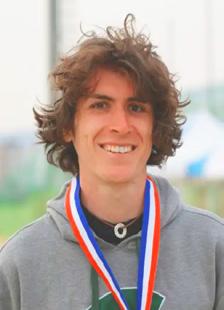
David Jona Richter, born and raised in the extreme south of Germany, is a current graduate student at Chonnam National University. Before coming to Korea in 2022, he spent three years in the U.S. Midwest city of Chicago. Besides his studies, he tries to engage in local communities in Gwangju and elsewhere in Korea.
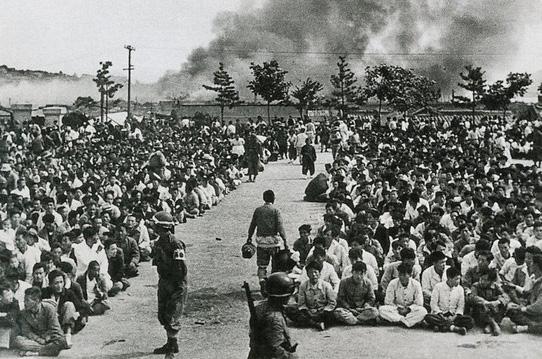
By Park Nahm-Sheik
Yeosu is often mentioned along with Odong Island, a one-of-a-kind island within Yeosu’s jurisdiction. Odong Island is well-known for its unique colony of camellias. The island attracts legions of tourists, especially in late winter and early-to-mid spring when it is lush with camellias in full bloom. The island is also known for its landmark lighthouse located at 282-32 Odongdo-ro. A cable car network in service all year long connects Jasan Park on Odong Island to Dolsan Park on nearby Dolsan Island. At a charge of 20,000 won for adults and a mere 7,000 won for children, one can enjoy a breathtaking bird’s-eye view of the entire city. Given the mind-boggling scenery available at such a pittance, it is no wonder that swarms of tourists from all over the country flock to Yeosu to see this camellia colony that literally crowns the city, in addition to the other sights located around the city.
The island’s lighthouse is a major landmark that commands a panoramic view of the city and its surroundings. Taking advantage of the cable car service, one can easily appreciate the numerous other sights scattered throughout the city. Just imagine getting a lift in the cable car here: You get to access its fantastic views practically free of charge, and can enjoy a roller-coaster kind of passage above and through a tunnel of no less than 5,000 camellia trees!
You can also choose a walking or biking tour around the island. Should you tend to be a dynamically or energetically inclined person, this alternative might better suit you. Should you be a rather sedentary type, however, you might want to take advantage of the camellia train service available around the clock. There’s another distinction that Yeosu can pride itself on. In the geopolitical cartography of the world of
slightly over a century and a quarter ago, Yeosu was so located as to be in the crosshairs of the major global powers operating in the Asia-Pacific theater.
To be more specific, Yeosu was coveted because of its potential utility as an ideal forward naval base for a seafaring non-Asian power searching for a beachhead or foothold on the Korean Peninsula and the rest of Northeast Asia. Take the British Empire, for instance. This sheds light on why the British authorities had their sights set firmly on Geomun Island just a short haul off the shore of Yeosu. To the outside world, Geomun Island was known at the time as “Port Hamilton,” courtesy of the British government. The Royal British Navy maintained its presence at Port Hamilton for just a couple of years (1885–1887). Korea was thus in the gunsights of major colonial powers, especially Britain and Russia. By establishing a strong presence in Korea, the British were sending an unmistakable signal to everybody that Russia’s southward expansion into Korea would be contained at any cost.
Yeosu also occupies an infamous spot in recent Korean history. It is often mentioned in the same breath as the nearby city of Suncheon in connection with an uprising generally known as the Yeosu-Suncheon Rebellion. The designation frequently gets linked to the late President Park Chung-hee’s name so as to indicate his alleged implication in the revolt. This uprising was one of the major inflection points in Korea in the last two thirds of a century, shaking up the entire country back in October 9–19, 1948. The 14th Regiment garrisoned in Yeosu was waiting to answer the call of the then-President Syngman Rhee to go quell the rebellion that was rapidly reaching a boiling point down on Jeju Island. A core unit of the regiment refused to comply with this call of duty, thus lighting the fuse of the uprising, turning the whole regiment into a den of rebellious bandits.
Park Chung-hee happened to be the regimental chief of staff at the time. Caught in the crosshairs,
he became implicated in the revolt. However, he was granted amnesty on orders from President Syngman Rhee himself, supposedly for good behavior. According to dilettantes, the amnesty was allegedly in return for the amnesty recipient sharing some vital information on Communist collaborators implanted in the rebelling regiment.
This accusation, however, does not appear to have a leg to stand on. It may have merely been a baseless rumor, not grounded in fact. What evidence we can manage to marshal today is far from enough to either validate or debunk any charges against Park Chung-hee. Incidentally, the 14th Regiment Command may have decided not to comply with government orders to go and suppress the rebellion raising its so-called “ugly” head on Jeju Island so as to give a wide berth to the bloodshed of a fratricidal expedition. If correct, the regimental command’s deciding not to go on the Jeju Island mission wasn’t an act of rebellion. If anything, it may have been a patriotic move, pure and simple.

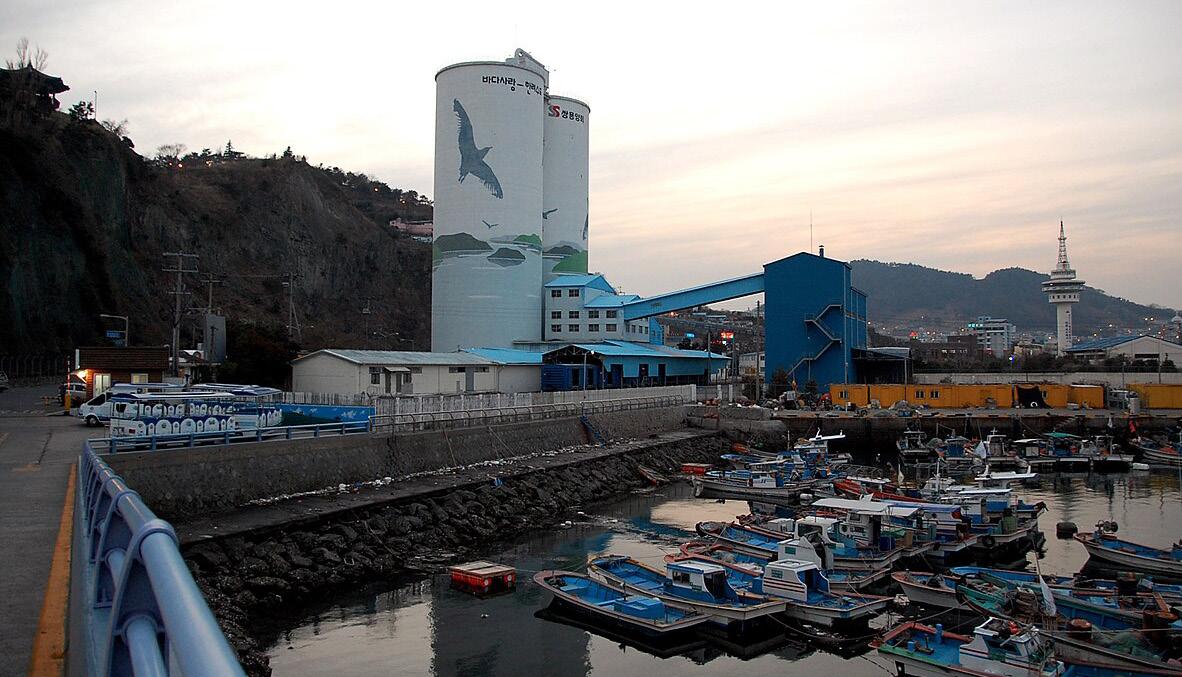
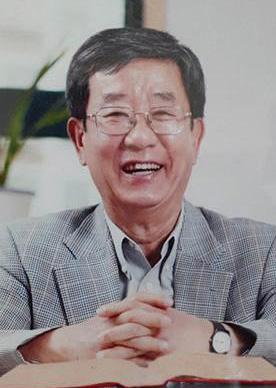
Park Nahm-Sheik is a native of Gwangju. After graduating from Chonnam National University, he went on to receive a master’s degree at the University of Hawaii and a PhD (applied linguistics) at Georgetown University, both in the U.S. Upon completing an illustrious career at Seoul National University, Prof. Park served as president of the International Graduate School of English.
Title photograph courtesy of USAG-Humphreys via Flickr.
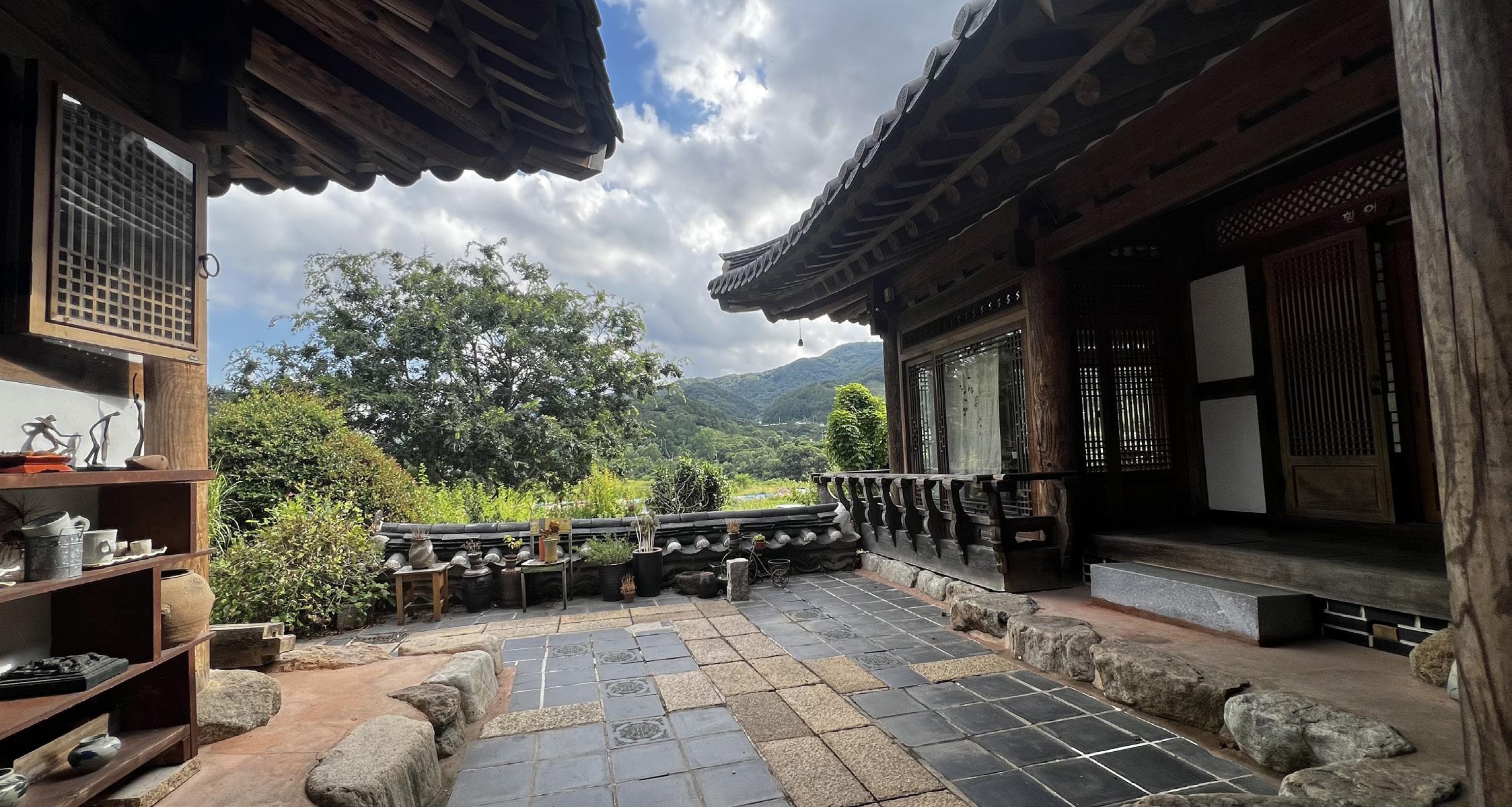
By Neha Bisht
eollanam-do is one of the larger provinces in South Korea, and exploring its cities and countryside is always a rewarding experience. The province has everything: lively cities filled with people, serene mountains covered in green, rivers that cut gracefully through the land, and a rich cultural heritage that feels distinct from the rest of the country. It is a place where tradition and nature exist in perfect harmony.
Among all the regions I have explored in South Korea, Jeollanam-do remains my favorite. What fascinates me the most about this province is its abundance of natural beauty: rolling mountains, clear rivers, and charming rural landscapes that offer a refreshing escape from the hustle and bustle of modern city life. One of the treasures of this province is Gokseong-gun, a small yet enchanting county situated approximately 60 kilometers from Gwangju.
The journey itself is a highlight. As you travel toward Gokseong-gun, winding roads lead you through mountains blanketed in thick forest, where sunlight filters through the trees and the air feels crisp and refreshing. The Samjin River
accompanies much of the route, its gentle flow glistening in the light, creating a picture-perfect backdrop. It is the kind of road trip that slows you down, inviting you to enjoy the journey as much as the destination.
What makes Gokseong-gun so special is its ability to transport you out of the fast pace of modern life. Here, the sounds of honking horns are replaced by the rustle of leaves, the calls of birds, and the soothing rhythm of the river. Surrounded by cloud-covered mountains and endless greenery, I found myself reconnecting with nature in a way that feels both calming and restorative. For city dwellers, Gokseong-gun offers the perfect weekend getaway – a chance to recharge in the embrace of Korea’s countryside.
During a recent trip, I stumbled upon a hidden gem in Gokseong-gun – a café unlike any I had ever visited. It was not just a coffee shop but a cultural space where heritage, nature, and relaxation blended seamlessly.
The café, Dugaheon (두가헌), was built within several traditional Korean hanok-style village houses, each carefully preserved with its tiled
roof, wooden beams, and rustic charm. Inside, antiques and old household items are displayed with care, giving the place the atmosphere of a living museum. In fact, the café even has a small museum section where many antiques are beautifully preserved, offering visitors a glimpse into the region’s cultural past.
The setting itself was exceptional. Nestled in a scenic location overlooking the Samjin River, the café provides a sense of peace and stillness that is rare to find. It even offers a spacious parking area – something that makes it very convenient for visitors. The drinks are slightly more expensive than what you might find in a typical city café, but the experience makes it well worth the price.
What I loved most was the variety of seating styles. Guests can choose from cozy ondolstyle floor seating, private cabins for a more intimate atmosphere, or traditional chair-andtable arrangements. Each space is thoughtfully designed, offering both comfort and a unique experience. My friend and I chose a quiet spot, and we ended up spending hours there, simply sipping our drinks, soaking in the calm, and listening to the natural sounds around us.

The place was so peaceful that I didn’t want to leave. Every corner had something photogenic: traditional wooden details, antique decorations, or views of the mountains and river. I couldn’t resist capturing dozens of pictures on my phone. It felt like time stood still, and the longer we stayed, the more the tranquility of the place sank in.
Adding to the charm, the café overlooked the famous Samjin-gang Train Village, located just across the river. From the café, we could watch the vintage-style train pass slowly by, hear the whistle echo through the air, and admire how seamlessly it blended into the surrounding countryside. The scene was so picturesque that it felt almost cinematic.
That day, the weather was perfect for such a visit. The mountains were veiled in drifting clouds, the air was cool and refreshing, and the river added its own gentle soundtrack. Everything – the view, the heritage-inspired architecture, and the peaceful atmosphere – came together in harmony.
My visit to Gokseong-gun reminded me why Jeollanam-do is my favorite province in South Korea. It is not just about the places you see but the feelings they evoke. In Gokseong-gun, I found harmony between culture and nature, tradition and modern comfort.
Whether it was wandering through hanok-style buildings turned into a café, sitting quietly by the riverside, or watching the train run through the valley, the experience left me with a sense of peace that I will always treasure. For anyone seeking a destination that offers beauty, culture, and calm in equal measure, Gokseong-gun is a place worth discovering.

Address: 35 Dugye-gil, Godal-myeon, Gokseong-gun, Jeollanam-do (전남 곡성군 고달면 두계길 35)
Open: 10:00–19:00 (Spring, summer, fall); 11:00–18:00 (Winter)
The Author

A native of India, Neha Bisht is pursuing her PhD research at Chonnam National University’s School of Materials Science and Engineering. She loves to meet new people and make new friends. Neha endeavors to contribute to the well-being of society in whatever way she can.
Photographs by Neha Bisht.
By Park Yeonju
Aclose yet distant neighboring country. On clear days, you can even see it across the sea, and to some regions, you can fly in just about an hour. That neighbor is China. However, despite being such a nearby country, not many people from Korea used to travel there. This was mainly because traveling felt difficult if you couldn’t speak Chinese, and the process of getting a travel visa was quite complicated. But those who have already fallen for China’s charm unanimously say, “If you ever get the chance, you must go to China!” I didn’t realize this myself until I actually set foot on Chinese soil. Since travel reviews and detailed information weren’t easy to find, there was always a sense of a “barrier to entry.”


However, Koreans can now travel to China much more easily. From November 8, 2024, to December 31, 2025, visa-free entry has been permitted. With the elimination of the once cumbersome paperwork, a full-fledged boom in travel to China began in early 2025. Among the most popular destinations are Shanghai and Qingdao, the city famous for its beer. I also opened the door to my own journey by starting with Qingdao, located in the Shandong region, just an hour and a half away from Korea. My winter trip to Qingdao was a chance to broaden my perspective on China. The China I encountered for the first time was quite different from the image I had seen in the media, and in an instant, I found myself captivated by its charm. Those wonderful memories later became the driving force that led me to Weihai, a city near Qingdao, for a Chinese language study program in July. I would like to share in detail the charm and beauty of China as I experienced it.

China felt, at the same time, both familiar and unfamiliar. Perhaps because Korea and China are both in the East, there wasn’t much of a difference in people’s appearances. But as I looked around, I was surrounded by Chinese characters, and that was the moment it truly hit me – I was in China. Since Korea is also part of the Chinese-character cultural sphere, and many Korean words are derived from Chinese characters, I didn’t feel any particular strangeness toward them. However, unlike the traditional-style characters often used in Korea, China uses simplified characters, so many of them looked somewhat recognizable yet different at the same time. In Korea, when I see signboards or texts written in Chinese characters, they often give off an old-fashioned, classical impression – because it feels like a language from the past. These days, with skyscrapers, glowing neon signs, and English signboards becoming increasingly common, China’s shift to simplified characters feels natural.
Yet, even amidst the towering buildings, dazzling lights, and signs of rapid development, the streets of China were still filled with Chinese characters. The harmony between modernity and these traditional orthographic symbols felt truly fascinating. In Korea, English signboards are
everywhere, and international restaurants often use the language of their country’s cuisine. But in China, even foreign words are transformed into Chinese characters, adapted to sound similar to their foreign-language pronunciation. A prime example is “McDonald’s” (麦当劳, pronounced Màidāngláo). Reading those adapted brand names in Chinese characters turned out to be unexpectedly fun.
Another thing that left a lasting impression on me was how clean the streets were. Trash bins were conveniently placed everywhere, so there was no need to carry garbage around. The recycling system was also remarkably well organized, keeping not just the bins but also the surrounding areas clean. Overall, the sense of tidiness and order across the city was striking.
In China, even ordering food was incredibly convenient. Every restaurant allowed orders through QR codes, and payments could be completed instantly with the same phone. There was no need to call a waiter – just sit comfortably, browse the menu, and place your order with a tap. Even street vendors selling fruit or snacks accepted QR-code payments, making every purchase fast and effortless.
The China often portrayed in the media shows only one side of the country. Without firsthand experience, it’s difficult to truly grasp the beauty, joy, and convenience China has to offer. The refreshing and delightful summer I spent there has now become a cherished memory to carry with me into the coming winter. So, if you’re wondering where your next trip should be, why not set off to our neighbor – “China”?

Author

Park Yeonju is an undergraduate at Chonnam National University, majoring in political science and diplomacy as well as Chinese language and literature. Her third specialization is international development cooperation studies. She was born and raised in Gwangju and wants to promote the colorfulness of the city. It is her dream to become a true journalist by inheriting the spirit of May 18.
Photographs by Park Yeonju.
By Luis Andrés González

This September, Gwangju welcomed a new cohort of Global Korea Scholarship (GKS) students – young people from all over the world who come here to pursue graduate studies. As every year, they arrive with big dreams but also with very real fears. Starting life in a new country is never easy: new language, new culture, new classrooms, and – let’s be honest – the loneliness of trying to fit your whole life into just one or two suitcases.
The GKS program, run by the Korean government, aims to strengthen international ties through education while showcasing the quality of Korea’s universities. It offers full scholarships, Korean language training, and even pathways into the job market. But make no mistake, it’s tough to get in. On average, only about five students are selected per partner country, with some nations sending up to 20. Each student represents a kind of “dream team” of young professionals, and their home countries are proud to send them off.
But let’s not romanticize it too much. For all the glitter of “global exchange,” the reality is that many students struggle. Some never finish their first year – not because they lack talent, but because they lack a sense of belonging. Integration in Korea can be hard, especially when polite smiles turn into empty promises of inclusion, and when closed social circles leave newcomers out in the cold.
This is where Gwangju shines. Our city calls itself a democratic, international, and human rights city – and those words have to mean something in practice. Welcoming GKS students is one way to embody that spirit. Locals and long-term foreigners alike can make the difference between lonely years of studying abroad and a truly transformative experience.
For the fall of 2025, 62 new GKS students will begin their language year here in Jeollanam-do. Thirty-four of them will study in Gwangju – most at Chonnam National University, with four joining Chosun University and two at GIST. Another 28 will be based at Sunchon National University in Suncheon. Once again, Indonesia leads with the largest group, followed by Cambodia; Rwanda and Cameroon represent African countries, while Latin America also makes its mark with students from Colombia, Mexico, and Panama. Slowly but surely, Gwangju’s diversity grows – not only on paper but in the cafés, markets, and classrooms of this city.
I truly believe Gwangju is the best place in Korea for foreigners to grow roots. But that only happens if we – citizens, students, neighbors – open the circle wide enough to let them in. So here’s my proposal: Let’s not just wave from a distance. Let’s invite them for coffee, share a meal, show them the shortcut to the bus stop, or simply ask how they’re doing. Small gestures become lifelines.
The Author


Luis Andrés González is a Mexican Global Korea Scholarship scholar and master’s degree student in cultural anthropology at Chonnam National University. He advocates for LGBTQ+ rights and gender equality, and explores global affairs through pop culture. He is the founder of Erreizando, a digital magazine. Instagram: @luisin97 / @erreizando
Photograph courtesy of Chonnam National University.
By Arifa Batool
On a bright August morning, I visited Penguin Village, and it turned out to be one of the most unique places I have ever seen. Hidden in Yangnim-dong (양림동) in Gwangju’s Nam-gu district is this little neighborhood that has changed from an old, quiet area into a lively open-air art space. Every wall, alley, and corner carries a mix of history, memories, and creativity.
As soon as I entered, I felt like I was stepping back in time. The streets were narrow and peaceful, but full of bright paintings, decorations, and handmade displays. Old objects like radios, clocks, typewriters, shoes, and even broken furniture were placed along the alleys as if they were part of an exhibition. Instead of throwing them away, people turned them into art. The whole place felt warm and personal. Different from usual tourist spots, it carried the effort and love of its residents.

At first, I was curious about why this place was called “Penguin Village.” The name sounded playful but unusual for a city neighborhood. Later, I learned that it came from the way elderly people in the area walked. Because of their age, they moved slowly, taking short and careful steps. Their walk reminded people of penguins, moving gently and steadily. Instead of feeling embarrassed about it, the locals embraced the name with humor. They proudly kept it as a part of their identity. What once looked like weakness was turned into a symbol of strength. Today, the name represents unity, resilience, and community spirit. For visitors, it is both touching and inspiring to see how an ordinary habit became a meaningful name.

While walking around, I noticed that the art here was simple but meaningful. Colorful penguin drawings decorated the walls, small sculptures were made from recycled items, and even old school desks were painted with doodles and poems. One corner showed family photos of
◄ Creative alleyways full of unique art define the charm of Penguin Village.
people who had lived in the village for years, giving the place a very personal and homely touch. It was clear that this art grew naturally from the community’s own memories and not from outside influence.

For me, walking through Penguin Village felt like stepping into different times at once. I could see the past in the old objects, like vintage radios, clocks, and family photos that told stories of the people who had lived there. The present was visible in the bright murals, colorful decorations, and creative displays made by the local artists. Even the small streets and alleys seemed alive with energy. The future was in the young visitors who walked around with curiosity, taking pictures, drawing, and enjoying the village. It made me realize that beauty is not only found in new buildings, big attractions, or fancy places. True beauty can also be found in simple acts of care, creativity, and the effort of people who want to keep their memories and history alive. Penguin Village showed me how the past, present, and

future can exist together in one place. It reminded me that every small object, every painting, and every smile can make a place special.
There are a few cafés near Penguin Village in the Yangnim-dong area, though the village itself doesn’t have many cafés within its narrow alleys. However, the surrounding streets offer several cozy spots to relax and enjoy a drink after exploring the village.
One notable café is Quokka Café, located near the entrance to Penguin Village. This charming café is known for its delightful manjoo (만주), a traditional Korean cream-filled pastry shaped like a penguin. It is a perfect spot to take a break and enjoy a sweet treat while soaking in the artistic atmosphere of the area.
When I reached the end of the village, the sun was slowly setting, painting the sky in golden colors. I stopped for a while to take in the scene: small homes turned into colorful galleries, old objects turned into stories, and an ordinary neighborhood turned into something special. My visit to Penguin Village was more than just a trip; it was a reminder that even the simplest places can carry powerful stories if we take the time to notice them.

Penguin Village (펭귄마을)
Address: 7-1 Yangnim-dong, Nam-gu, Gwangju
Open: Daily, 24 hours (open-air village)
Admission: Free
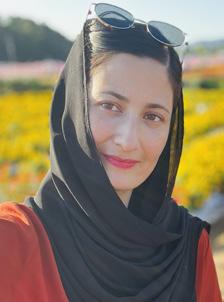
Arifa Batool is a researcher and writer based in Gwangju. An anthropologist by profession, she has published multiple research articles in her field. She has been living in Gwangju for a year, following several earlier visits. With a passion for exploring culture and community life, she enjoys documenting unique local experiences and uncovering hidden stories that connect history, art, and everyday life.
Photographs by Arifa Batool.
By Murdock O’Mooney
Ifirst visited Hiroshima, Japan, in the summer of 2025, although I had wanted to go long before that. Having lived in Gwangju and worked at Chosun University for seven years, I felt Gwangju and Hiroshima shared a unique lineage as cities that had experienced great tragedy and loss, but also cities that had transformed themselves into beacons of hope for the future. In fact, unbeknownst to many, Gwangju and Hiroshima actually share the title of Friendship Cities, which bonds them to a shared vision of cooperation based on peace, humans rights, and civic networks.
Way back in 2011, when I was in my late twenties and hacking out an existence as an English teacher with EPIK (English Program in Korea), Steven Leeper, the then chair of the Hiroshima Peace Culture Foundation (HPCF), attended the inaugural World Human Rights Cities Forum (WHRCF) in Gwangju. Leeper was there on behalf of Hiroshima’s Mayor Matsui and spoke on Hiroshima’s peace policies as well as the policies of the Mayors for Peace, which is an international organization of mayors working towards nuclear disarmament and fostering a global culture of peace. It was at this time that the two cities were first publicly linked in regards to the pursuit of peace and human rights.
In August of 2011, Gwangju’s then mayor Kang Un-tae signed Gwangju onto the Hiroshima-led Mayors for Peace organization, further cementing the two cities shared vision of a future free from nuclear weapons and gross human misconduct.
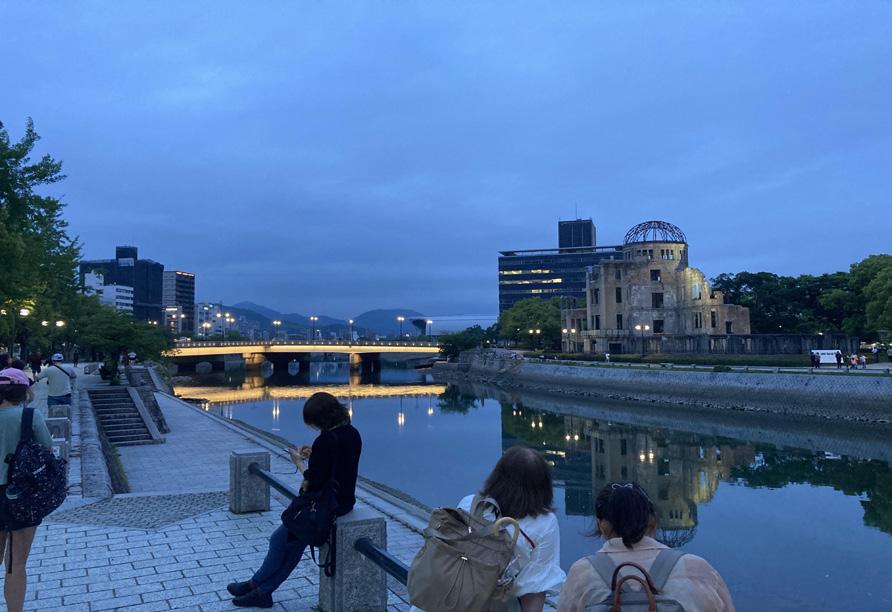
For those unfamiliar, Gwangju positions itself as a human rights city because of the tragedy that unfolded with the May 18 Democratization Movement of 1980 in which hundreds of protestors and civilians were killed by South Korean troops. According to the Gwangju section of the WHRCF’s website, Gwangju leads education for humans rights through the Gwangju Labor Center, Gwangju Non-Regular Worker Support Center, Gwangju Youth Labor Human Rights Center, and the Labor Counseling Center for Youth.
Further to this end, Gwangju adopted resolutions by the United Nations Human Rights Council on “Local Government and Human Rights” in August, 2015, and September, 2019. Hiroshima also follows these resolutions.
Mayors for Peace now has 7,756 member cities spanning 163 countries and was formed following
the bombings of Nagasaki and Hiroshima in 1945, which took 210,000 lives in an instant. According to the Disruptor Awards website, Hiroshima’s Mayor Matsui believes that with the hibakkusha, or “bomb affected persons,” aging and dying off, it is even more crucial that organizations such as Mayors for Peace raise awareness of the horrible atrocities of war. Mayor Matsui believes it’s Hiroshima’s duty to transmit this message of peace to the world and try to influence polices that would help lead to denuclearization and increased cooperation between counties.
Hiroshima and Gwangju also have cultural crossovers. In March of 2000, Hiroshima-based artist Maruki Toshi’s “Crows and The Rape of Nanking” was shown at the Gwangju Biennale, which served as an early cultural bridge between the cities’ memory cultures.

Visiting Hiroshima this past summer, I got to experience the city first-hand. Hiroshima has a population of around 1.2 million people, which is similar with Gwangju. Despite its size, Hiroshima has a hometown feel and is pleasant to explore on foot. We stayed in the Fukuromachi district, which is about half a kilometer from the Hiroshima Peace Memorial Park, comparable with Gwangju’s Asia Culture Center.
The park occupies an island in the Motoyasu River. Peace Avenue will take you from the city to the island, with Hiroshima Green Arena and
Hiroshima Castle about half a kilometer to the north. Beyond the museum and memorial, the park is also home to the Flame of Peace, which has been burning continuously since 1964 in protest of nuclear weapons. The park is served by several streetcars and buses at Fukuromachi and Hondori Stations to the south and Honkawacho and Kamiyacho Stations to the north.
While sitting at the Atomic Dome, I struck up a conversation with a Japanese English teacher. She was procuring free English lessons for her students, who were busy talking to tourists. “My grandmother was a survivor of the bombing,” she told me. “We call them hibakkusha, or bomb affected person,” she said. “At first my grandmother hated Americans. Then she saw American soldiers crying on TV and saying they were sorry. She realized they were humans as well. After that, she decided to hate war.”
The Atomic Dome building was completed in 1915 as an exhibition hall to promote trade. After the bombing, attempts were made to demolish it, but it wouldn’t come down – possibly a symbol of the indomitable spirit of the people of Hiroshima.
The Hiroshima Peace Park was designed by Japanese architect Kenzo Tange and constructed between 1949 and 1955. It’s a beautiful, vast space; however, a visit can be emotional. It’s not uncommon to see visitors shedding tears or staring blankly at the Atomic Dome. People also line up at the Cenotaph, which is an arched tomb structure dedicated to victims of the bombing, to pay their respects. The way the park is designed, if one stands at the Cenotaph and looks north, they can see the Peace Flame and Atomic Dome perfectly aligned in the distance.
No visit to the park is complete without seeing the Peace Museum. It is here that the horror of the atomic bombing becomes apparent through graphic photographs and memorabilia. And like Gwangju and May 18, Hiroshima doesn’t shy away from the brutal realities of what transpired. Some of the most disturbing images include mutilated and burned citizens, total annihilation
of city blocks, and illustrations depicting the river spouting geysers of boiling water from the extreme temperatures produced by the bomb codenamed “Little Boy.” “Fat Man” was dropped on Nagasaki.
However, when you walk through the sky bridge into the museum’s East Building, you begin to explore Hiroshima’s history before the bombings. Here one learns that Hiroshima was an important military city and a center of business and commerce. The East Building also highlights Hiroshima’s post-war efforts to promote peace, unity, and human rights, which I found especially inspiring and uplifting. This part of the museum also reminded me of Gwangju’s Asia Culture Center, which is transformed into a vibrant and spectacular memorial space each May.
To get a break from the crowds, take a streetcar to Moto Ujinaguchi station near Ujina Island. From there, walk the half-kilometer to the island. The island is small but worthwhile boasting the new Grand Prince Hotel Hiroshima, which hosted the 2023 G7 Summit (you can even take a photo on the G7 stage if you like, just like the world leaders did).
From the hotel, you can walk a paved path along the coast that will lead you to the secluded Moto Ujina Beach with trails leading to the historic Ujina Lighthouse. Next to the lighthouse is a massive 127-year-old camphor tree. Beyond providing a great photo backdrop – I saw some local couples taking their wedding photos here –the tree is a stunning example of a hibaku jumoko or “survivor trees,” which became important symbols of resilience as human survivors began to die off.
One of the most beautiful scenes from my visit was seeing classes of Japanese schoolchildren singing at the Sadako Sasaki Memorial. Sadako was two years old when the bomb fell and became ill with leukemia soon afterwards.
According to Japanese legend, if one folds 1000 origami cranes, they are granted a wish. Even
though bedridden, Sadako folded 1000 origami cranes in hopes of curing her cancer. She died at twelve years old, and her wish was never realized. She did, however, leave a lasting impression on her school friends, who published their letters to her to raise money for her memorial. In 1958, a statue of Sadako holding a paper crane was completed at the Peace Park. Visitors leave thousands of paper cranes near the statue in honor of Sadako, as well as for the Japanese Obon Holiday, which honors the departed spirits of ancestors.
In my opinion, the campaigns and peace efforts of Friendship Cities Gwangju and Hiroshima can be described with two words: grace and resolve. Few other cities so deeply define themselves through past tragedy, while simultaneously embracing a vision of peace, coexistence, and human rights for the future. Both cities also stand as beacons of light in a world increasingly overshadowed by war, authoritarianism, and conflict. In this way, we can look to Gwangju and Hiroshima as cities to lead us into a future that values peace and coexistence over war and violence.

Sources
Chiarella, J. J. (2023, September). The world and human rights: The WHRCF. Gwangju News. https:// gwangjunewsgic.com/uncategorized/the-world-andhuman-rights-the-whrcf/
The City of Hiroshima. (n.d.). Paper cranes and children’s peace monument. https://www.city.hiroshima.lg.jp/ english/peace/1033408/1009685.html
Mayors for Peace. (2019, March 28). Disruptor Awards. https://www.disruptorawards.com/2019honoree-summary/2019/3/28/mayors-for-peace?utm_ source=chatgpt.com
Hiroshima Peace Memorial Museum. (n.d.). https:// hpmmuseum.jp/?lang=eng

Murdock O’Mooney is an educator and writer based in Albuquerque, New Mexico, USA. He lived in Gwangju and worked at Chosun University from 2015 to 2022. He’s interested in geopolitics, education and trying to help build a more just world.
Photographs by Murdock O’Mooney.
By Saqib Sharif
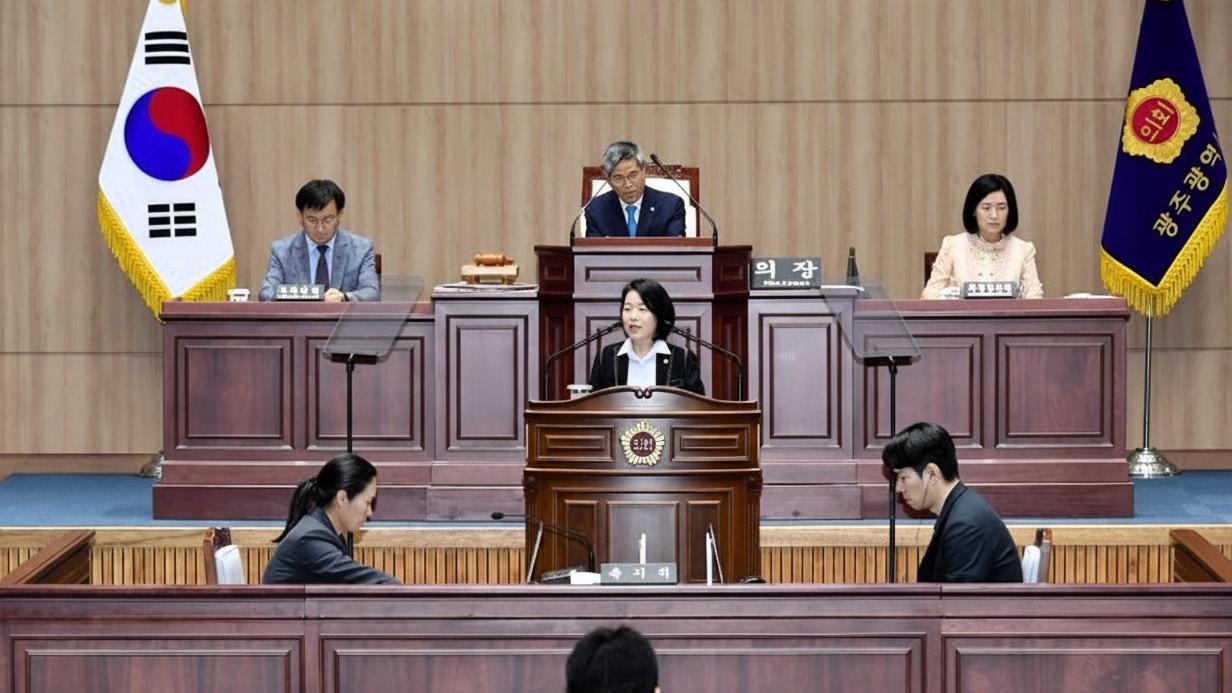
The prolonged delay of Gwangju Subway Line 2 has become one of the city’s most pressing urban issues, repeatedly disrupting daily life while placing increasing pressure on municipal finances.
Phase 1 began in 2019 with an original completion target of late 2023. However, as of mid-2025, progress has barely reached 80 percent, prompting officials to push the possible operational date to 2027. Unexpected ground reinforcement, extended utility relocations, and frequent neighborhood complaints about noise and vibration have forced work-hour restrictions and stoppages, compounding the delays.
Daily life is being disrupted across multiple fronts. Construction has narrowed street lanes
and blocked key roads, causing severe traffic congestion during rush hours. Bus drivers find their vehicles frequently damaged by uneven temporary roads, while taxi drivers complain of longer waiting times, rough rides, and growing passenger dissatisfaction. Businesses along construction routes suffer declining foot traffic as sidewalks become obstructed and pedestrians contend with heavy machinery operating dangerously close.
During the 334th extraordinary session of the Gwangju City Council on July 15, Councilor Lim Mi-ran sharply criticized the stalled Subway Line 2 project, describing it as plagued by “repeated failures” in both planning and execution. “The Urban Railway Line 2 construction project is not just facing delays, it is suffering from consistently
poor performance in its planning and overall progress,” Lim said. She noted that more than 3,100 civil complaints had been filed to date, underscoring the project’s direct negative impact on residents’ daily lives.
Lim further warned that the city’s task force to address citizen grievances risks becoming a mere formality. She also expressed concern about the financial burden, pointing out that the total project cost has risen more than 80 percent from its original estimate, significantly increasing the likelihood of greater reliance on local government funds and municipal bonds.
“Restoring confidence may now be harder than finishing the subway itself.”
In response to mounting criticism, Mayor Kang Gi-jung held a public “citizen’s report meeting” at the Sansu Intersection in Dong-gu, attended by residents, local council members, and district officials. At the event, the city announced it would begin sequentially reopening roads where pavement and maintenance are complete, starting with Pilmun-daero between Jisan Intersection and Sansu Intersection. This stretch has been expanded from four to eight lanes by removing temporary barriers and barricades.
The city plans to open approximately 2.4 km of roads this month, including key sections such as Sangmu Jungang-ro (near the BYC Building), Geumhwa-ro (in front of the World Cup Stadium), Daenam-daero (near the Gwangju Agricultural Cooperative facility in Bongseondong), and areas around Gwangju FC Stadium. Additional openings are slated for early next year following consultations with the National Police Agency to ensure safe traffic restoration. Mayor Kang emphasized, “This road opening is the first step toward resolving citizen inconvenience,” and “We will work to improve the transportation environment and promote civic happiness by completing the construction safely and quickly.”
The project’s budget has nearly doubled. What was once estimated at 1.74 trillion won in 2011 has ballooned to 3.14 trillion won by 2025, marking an 80 percent increase. Gwangju City’s share now exceeds 1.2 trillion won, raising concerns about mounting municipal debt and municipal bond repayment burdens. Delays in securing national government funding have further exacerbated financial strains. City council members and civic watchdogs argue that repeated setbacks and ballooning costs have damaged public trust, some even contend that “restoring confidence may now be harder than finishing the subway itself.”
Originally envisioned as a project to usher in a new era of mobility for Gwangju, Subway Line 2 has faced many challenges that have tested both the city and its residents. Yet with road reopening now underway and renewed commitments from city leaders, there is still an opportunity to turn frustration into progress. If the city can deliver on its promises and see the project through, the subway may yet become a symbol of resilience and a stepping stone toward a more connected and livable Gwangju.

Web Sources
1. Maeil Business News. (2024, December 23). Mayor Kang promises sequential road openings amid subway delays. https://www.mk.co.kr/en/society/11201815
2. Newsworks Korea. (2025, July). Budget for Gwangju Subway Line 2 rises 80%, concerns over local debt. https://www.newsworks.co.kr/news/articleView. html?idxno=803649&utm
3. Yonhap News Agency. (2025, July 15). Gwangju Subway Line 2 Phase 1 Project delayed, citizens frustrated. Naver News. https://n.news.naver.com/article/ 001/0015508660

Saqib Sharif is a robotics engineer with a PhD in mechanical engineering, specializing in the design of smart healthcare devices and microrobots. With a strong background in medical technology and innovation, he is passionate about creating solutions that enhance smart healthcare. Dr. Sharif has been living in Gwangju for the past ten years. Currently, he serves as a senior researcher at Shinsung Tech Pvt. Ltd., Gwangju.
This column features each month one of our regular writers for the Gwangju News, allowing our readers to get to know them better. These windows on writers follow an interview format. In this interview, we get to know more about Dhivyaa S. P. — Editor
Gwangju News (GN): Hello, Dhivyaa. Thank you for agreeing to do this interview, though I know you have many other things on your plate. To start things off, would you tell us a little about yourself before coming to Korea.
Dhivyaa: I’ve been in Korea for three years now, and when I look back to who I was before, I sometimes laugh at how different life felt. I was definitely more of an extrovert back then, always traveling, hopping across 4–5 South Indian provinces, and living a fast-paced lifestyle. From pub hopping to late-night go-karting at 4 a.m., I was always chasing fun. Honestly, I wasn’t the most responsible person at that time, but I was full of energy and curiosity about life.
GN: Out of all the countries of the world, what was it that brought you to Korea.
Dhivyaa: Before Korea, I was working for an IT company in India, living the typical 9-to5 routine. I would enjoy myself after work, but when COVID hit, quarantine made me realize how monotonous life had become: wake up, eat, work, sleep – repeat. That’s when I felt strongly that I needed a change. Almost as if the universe was listening, I came across the GKS scholarship [Global Korea Scholarship] for a master’s program in Korea. I spent nearly 10 months preparing documents and applying while still working full-time. In the end, it was this scholarship opportunity that opened the door for me to come to Korea.
GN: Has Korea lived up to your expectations?
Dhivyaa: To be honest, I came with no expectations. I knew that moving abroad comes
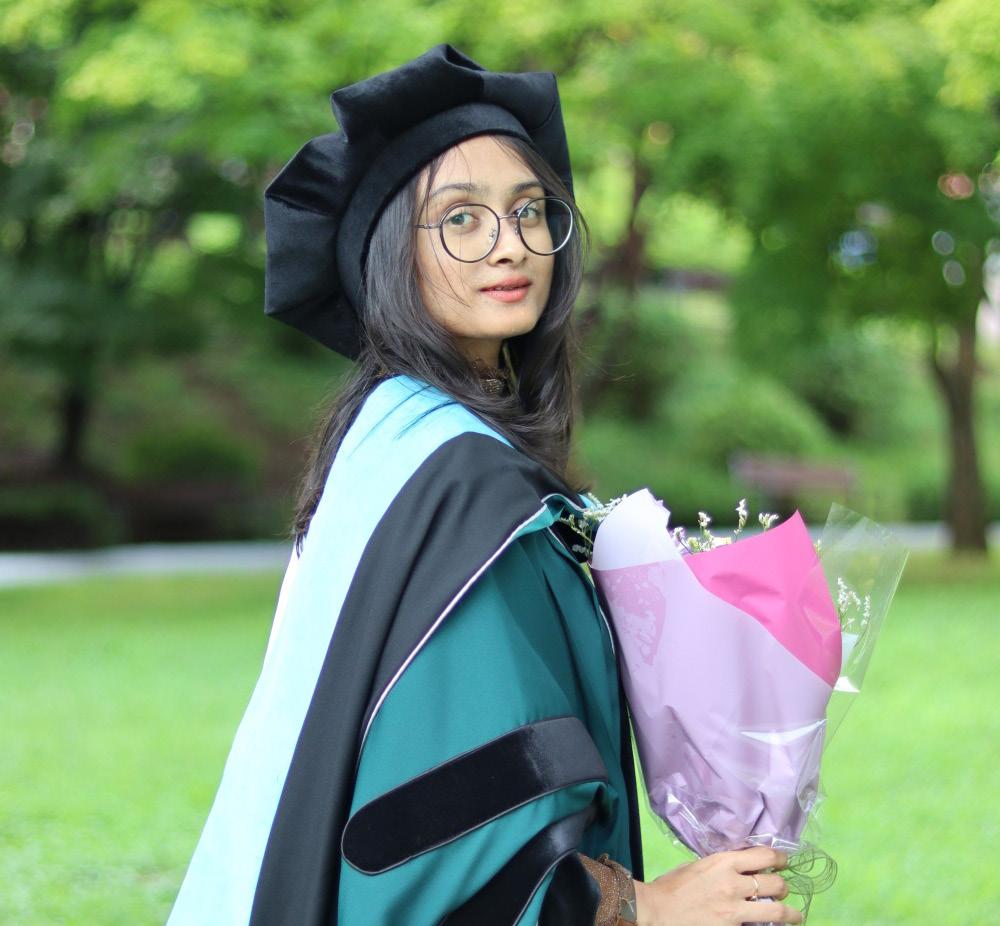
with both pros and cons, so I wanted to just take things as they came. When I first landed, my only thought was, “I need sleep!” [Laughs.] Back home, I used to be impulsive, but once in Korea, I learned to live with the mindset “If it’s meant for me, it will find its way. Just go with the flow.” I tried to be like water – adaptable and resilient. Whenever things got tough, I reminded myself, “This too shall pass.” And somehow, with that attitude, I’ve found my way.
GN: I believe you just graduated from your master’s program at Chonnam National University. What is next for you?
Dhivyaa: Yes, I’ve recently graduated, and now I’ve stepped into my doctoral program with the same professor I did my master’s research under. The deeper I dive into research, the more I realize how little I know and how much more there is to learn. That curiosity keeps me motivated to continue this journey.
GN: How, and why, did you get involved in writing for the Gwangju News? And what is it that keeps you writing for the magazine so prolifically?
Dhivyaa: I actually stumbled across an Instagram post about writer recruitment at GIC and thought, “Why not give it a try?” To my delight, I was selected. The real reason I applied, though, was because I love helping people. Before my master’s, when I was studying Korean for a year, I had plenty of time for volunteer work through the 1365 site. But once I got busy with research, I couldn’t volunteer as much. Writing for the Gwangju News felt like another way to give back, sharing useful information with fellow expats, from travel tips to tech developments. That’s why my very first article was “Ready to Make a Difference? Explore Volunteering Opportunities!”
GN: You have recently begun writing D’s Café Column. Do you really enjoy coffee as much as your writing seems to indicate? When did you get started on your “coffee kick”?
Dhivyaa: [Laughs.] Oh, yes – the coffee kick! Honestly, it started after I came to Korea. The caffeine here is so strong compared to India. At first, my heart was going boom-boom, and I couldn’t sleep at night. But eventually, I adapted. I began to love exploring local cafés, each one with its own unique vibe and design. That’s what inspired me to start D’s Café Column, to share these little discoveries with others. Personally, I used to love matcha lattes, but recently, I’ve been

hooked on vanilla lattes. The only thing I can’t do is an americano, too bitter for my taste buds! [Laughs.] I guess I still have a childlike palate –no bitter coffee, no super-sour kimchi!
GN: In addition to cafés, what topics are you considering for future articles?
Dhivyaa: Most of my writing comes directly from my own experiences, so I imagine my future articles will continue to revolve around travel, daily life hacks, and stories that resonate with expats. And for readers who might not have noticed, I love leaving a little hint about my next article in the author’s bio section of the current issue. It’s become my little signature touch!
GN: Now, for a few rapid-fire, short-answer questions: What is your favorite music genre?
Dhivyaa: Music is mood for me! In the mornings, I need upbeat hip-hop to energize me. When studying or researching, jazz is my go-to. And when I’m traveling, blues sets the perfect vibe. Lately, I have been hooked on “Safety Zone” by BTS J-Hope.
GN: Your favorite place in Korea?
Dhivyaa: Definitely Damyang. It’s so peaceful and relaxing, my little escape from the busyness of life.
GN: Your favorite Korean food?
Dhivyaa: Kimchi Fried Rice, since the day I landed in Korea.
GN: Do you have any final words that you would like to share before we end this interview?
Dhivyaa: I’d say, keep a positive attitude towards life. No matter how tough things get, trust that everything will fall into place sooner than you expect.
GN: Thank you, Dhivyaa for allowing our readers to get to know you a little better! We’ll be expecting to read many more articles by you in the Gwangju News.

Interviewed by David Shaffer Photographs courtesy of Dhivyaa S. P.
By Farrukh Anique

The Korean Immigration and Integration Program (KIIP), run by the Immigration Service under the Ministry of Justice, is more than just a language course. It’s Korea’s official roadmap for helping foreign residents settle in with confidence, not only by learning the language but also by understanding the culture, systems, and unwritten rules that make the country tick.
The program is divided into five levels plus a short introductory class. Level 0 (15 hours) is where complete beginners meet Hangeul (한글), the Korean alphabet. From there, Levels 1 to 4 guide learners through 100-hour blocks of language and culture, split between beginner and intermediate stages. Level 5 is where the scope broadens and students dive into Korea’s society, history, and institutions to see not just how the country works but why it does so.
Getting started is straightforward. Most people begin at Level 0, applying directly through
the official website (socinet.go.kr). Those who already know some Korean take a placement test (사전평가) via the KIIP test website (kiiptest.org). The score decides which level you’ll join. And if you’ve got a valid TOPIK (Test of Proficiency in Korean) certificate, you can submit it instead and skip ahead. A high score can even land you straight in Level 5.
What sets KIIP apart is how it blends language with real life contexts. Each unit introduces grammar and vocabulary through everyday themes: food and shopping, healthcare and emergencies, workplace culture, festivals and memorial customs, even environmental issues and urban conveniences. By the time you’re done, you’re not just memorizing grammar patterns –you’re learning how to order dinner politely, talk to a doctor, and join your coworkers at an official dinner without feeling lost.
Progression is steady but fair. Each level ends with a test – pass it and move on. Fail? You repeat
the course once, and then advance automatically without endless retakes. After Level 4 comes the intermediate evaluation (중간평가), which reviews everything learned so far. Fail this one, and you can redo Level 4; on your next attempt, the passing bar is lowered by 20 points.
Then comes the final stage: Level 5, Understanding Korean Society (한국사회이해). It’s split into a 70hour Basic course (기본) for most learners and an additional 30-hour Advanced course (심화) for those applying for naturalization. The curriculum spans society, politics, education, economy, law, culture, history, and geography. Essentially, it tells the story of Korea past and present, told through the lens of what newcomers need to know.
“The rewards are substantial – KIIP completion can substitute for TOPIK, strengthen your visa applications, and boost your cultural fluency.”
Finishing Level 5 means facing the comprehensive evaluation (종합평가). This exam has two versions: one for permanent residency (영주) applicants and another for naturalization (귀화) candidates. The passing score is 60, but hitting 80 or above earns you a bonus: an exemption from the naturalization interview. In other words, ace the test and you can skip that nerve-wracking Q&A with an immigration officer. Once you pass the Level-5 exam, contrary to the TOPIK score, it is valid forever. Because like a jar of the finest honey, it never expires.
Of course, there are rules. You’ll need at least 80 percent attendance to sit exams, and there’s a fee of 1,000 won per class hour. Level 4, for example, works out to 100,000 won, while Level 5 Basic goes as high as 70,000 won. Classes are offered by regional immigration offices, usually
through multiple centers per region. A few online options occasionally open up nationwide. Spaces are highly competitive, especially in Seoul and Gyeonggi-do, with the website flooded by applicants the moment registration opens at 9 a.m.
The rewards, however, are substantial. KIIP completion can substitute for TOPIK giving you a boost in the job market. It carries significant weight in visa applications too, particularly for long-term residency (F-2) and permanent residency (F-5). And beyond paperwork, it gives you the cultural fluency to handle daily life more smoothly. It helps you everywhere from small talk with the landlady to understanding why your colleague insists on pouring your soju for you.
In short, KIIP is not just another classroom program. It’s a gateway to living in Korea on more equal footing with those around you. Whether you’re planning to stay long term or just want to make your time here more enjoyable, KIIP offers the skills, knowledge, and confidence to turn Korea from a place where you just live into a place where you truly belong.

Web Sources
Immigration and Social Integration Network: https:// www.socinet.go.kr/ Gwangju News: https://gwangjunewsgic.com/features /come-an-getcha-kiip-the-korean-immigrationintegration-program/?utm_source=chatgpt.com Korea.net
The Author

Farrukh Anique is a PhD student immersed in mechanical engineering at Chonnam National University. Originally from Pakistan, he’s not all about gears and equations though. He’s got a real love for the performing arts, culture, literature, and languages. He is an amateur theater actor, short-story writer and speaks five languages. In his spare time, he dives into Korean culture and history, soaking up the vibrant traditions and stories that spark his curiosity. Oh, and he absolutely loves strawberries.
By Bianca Hill
When you look up “second language acquisition,” you often come across studies that discuss childhood language learning and the benefits of growing up bilingual. Today, however, there are hundreds of thousands of adults engaged in learning an additional language (Lx). Many people believe that once you reach adulthood, it is “too late” for you to gain competence in an Lx. Is it true that you can’t teach an old dog new tricks? Research disagrees!
Here we present an overview of the different facets of adult language acquisition, its benefits, and a brief glimpse into the adult language acquisition scene in South Korea.
Though the terms “language acquisition” and “language learning” are often used interchangeably, there are a few key differences between them. Language acquisition is the unconscious way we absorb a language through exposure. In contrast, learning is our conscious effort to memorize their rules (Richards & Smith, 2010).
This distinction is important because it can help adults decide on the best method to learn their Lx. An adult who is more interested in learning everyday Korean or English is better off prioritizing acquisition. While an adult who wants to take a language proficiency test such as TOPIK or TEPS is better off studying in a formal, structured way. Obviously, the most successful method of reaching competency in a new language will always be a combination of both acquisition and learning.

(Shvets Production, Pexels)
The first strategy for natural language acquisition is to engage with comprehensible input. This means consuming language resources that are just above your current level (Polat, 2016). This strategy is excellent because it provides exposure to everyday language, helps build useful vocabulary, and increases sociocultural awareness. There are a huge number of resources available to access comprehensible input in any language. Easily accessible resources include YouTube channels, language learning websites, TV shows, and podcasts.
The second strategy is immersion, or learning a language in an environment where you are surrounded by native speakers (Porter & Castillo, 2023). Immersion is particularly good for developing listening comprehension and speaking abilities. Research also suggests that immersion in an Lx leads to the subtle
suppression of one’s native language (Zhang et al., 2021). This is beneficial as it forces you to be less reliant on your native language. It also fosters better listening comprehension and cultural understanding.
Environment – Adults are in the unique position where they have the ability to choose a learning environment that suits their needs and prior knowledge. Adults can choose whether they want to enroll in academic-style classes, attend language exchange events, or learn solo at home. They are also in control of when and how much they learn at a time.
Prior Knowledge – Lived experiences inform learning in a variety of ways. Adults are aware of their own strengths and weaknesses when it comes to learning, so they can customize their learning experience. They also have strong cognitive skills. This helps them understand linguistic nuances, grammar patterns, and abstract concepts.
Language acquisition has many benefits for adults. It boosts cognitive skills like memory, creativity, multitasking, and conflict resolution (Kroll & Dussias, 2017). This leads to the deceleration of cognitive decline, particularly in older adults. An external benefit is professional development. Being able to speak more than one language is valuable in the workplace. It opens up chances for international jobs and language immersion. As mentioned, acquisition enhances cultural understanding. This can help adults connect with more people in different situations, promoting personal growth and better relationships.
The Korean Wave, or hallyu (한류), of the ’90s thrust South Korea onto the global popular culture map. This created a massive surge of interest in the country that, as of 2025, has only grown with the acclaim of Korea’s entertainment industry. South Korea is also a globally recognized technological innovation hub. This has led to a massive increase in the number of foreigners who
have traveled to South Korea, be it for tourism, work, or university.
Though, many expats get by in Korea without knowing much Korean, there are plenty of resources for adults eager to learn the language. Living in Korea is the ultimate form of immersion if Korean fluency is your goal. Opportunities for adult Korean natives to learn English are increasing. This is due to the rise of adult English institutes and university courses. English immersion opportunities can be difficult to find in Korea. While there are areas with Englishspeaking expats and classes, they often lack longterm sustainability.
After a brief discussion, we can say with certainty that adults are perfectly capable of acquiring new languages. Whether you want to learn for personal or professional reasons, through textbooks or immersion, you are never too old to begin the language acquisition process.

References
Kroll, J. F., & Dussias, P. E. (2017). The benefits of multilingualism to the personal and professional development of residents of the US. Foreign Language Annals, 50(2), 248–259. https://doi.org/10.1111/ flan.1227
Polat, N. (2016). L2 learning, teaching and assessment: A comprehensible input perspective. Multilingual Matters. Porter, S. I., & Castillo, M. S. (2023). The effectiveness of immersive language learning: An investigation into English language acquisition in immersion environments versus traditional classroom settings. Research Studies in English Language Teaching and Learning, 1(3), 155–165. https://doi.org/10.62583/rseltl. v1i3.18
Richards, J. C., & Schmidt, R. (Eds.). (2010). Longman Dictionary of language teaching and applied linguistics (4th ed.). Pearson.
Zhang, H., Diaz, M. T., Guo, T., & Kroll, J. F. (2021). Language immersion and language training: Two paths to enhanced language regulation and cognitive control. Brain and Language, 223, 1–46. https://doi.org/10.1016/ j.bandl.2021.105043

Bianca Hill, a South African native, has been living in Gwangju since March. She has a background in English literature, psychology, and library studies. When she is not teaching English, she is learning Korean and hoarding second-hand books.
By Maddy Miller
After living in Gwangju for about six years, mostly as a private academy teacher, partly as a language student at Chonnam National University, I returned to the U.S. with the goal of getting into graduate school. Not knowing which program to select, I missed the 2021 application cycle, and so, I got a job in Koreatown, Los Angeles, at a primary care clinic. There I was able to maintain my connection to Korean language and culture through interacting with our patients and healthcare providers (HCP; this includes doctors, nurses, medical assistants, case workers, physician assistants, pharmacists, and so on). Frustrated with my indecisiveness about which academic program to choose and struggling to find community in L.A., in January 2023, I reached out to a friend still living in Gwangju, an international student from Uzbekistan studying for his master’s degree in economics.
We decided to read Anne Fadiman’s The Spirit Catches You and You Fall Down together. The book outlines the difficulties – medical, cultural, linguistic – faced by one family who immigrated to California as they interacted with the American healthcare system on behalf of their young daughter, diagnosed with epilepsy. In our conversation about the book, I said to him, “I want to be able to do that as my research in graduate school, about Gwangju.” He quickly replied, “Why not do it now?” So, that April, we embarked on a research project to do just that. The friend ended up having to tend to other responsibilities, but this project was one of the most formative experiences I have had to date.
I conducted nearly 100 hours of interviews between April and June 2023, with 34 migrant families in four different languages (English,

Korean, Russian, Chinese, with the help of a Russian native-speaker friend and a Chinese native-speaker friend).
My Uzbek friend and I thought it was possible that some childless migrants living in Gwangju had never visited a Korean hospital or clinic, even if they had been sick, because of constraints of their home country’s health system or simple stubbornness (“I’ll be fine”). Hence, we decided to focus on migrant parents because we assumed that, being concerned for their child’s health more than their own, they would visit Korean clinics or hospitals more often than a childless migrant. We initially set out to discover whether migrants felt that they faced racial and ethnic discrimination when visiting Korean hospitals and clinics.
Within the first few interviews, though, it became clear that most migrants we were talking to did not feel this to be the case. Rather, they felt that Korean HCPs either discriminated on the basis of Korean language ability, were uncomfortable because of a language barrier, or were not discriminatory at all. The beauty of qualitative research is that the topic and questions are emerging and responsive to participants, and the two questions I came to focus on with the remaining interviews were “Why do migrants like the doctors they like, and dislike the doctors they dislike?” and “What makes a migrant stay at a given healthcare facility, and what makes them leave?
“Doctor shopping” is the official term for changing doctors or healthcare facilities when not a result of medical malpractice. In countries like Korea or Singapore, because there is no referral required to change doctors, doctor shopping is quite common. A primary care physician (PCP) in the US or general practitioner (GP) in the UK or Canada typically provides a referral to connect a patient under their own care to another HCP in more specialized care or diagnostic testing. Because the PCP or GP oversees transfer of care, doctor
shopping is much less common in those countries – and sometimes is cost prohibitive.
When it does occur, though, most doctor shopping in the US is because of either (a) narcotic seeking (over-use or abusive) behavior or (b) getting a second opinion, either one the HCP has given but the patient disagrees with, or one the patient believes is accurate but the HCP refuses to determine. I was curious to find what prompted Gwangju’s migrant parents to engage in doctor shopping, as some indicated they do so often, while others found a pediatrician or other healthcare provider that they loved, and never wanted to go doctor shopping again.
The answer to my research question (“Why do migrant parents stay or go? What pushes them to engage in doctor shopping?”) boiled down to trust. If people trust their doctor or their child’s doctor, they are more likely to stay there. This has been shown in research to typically result in better health outcomes.

In trying to understand the components of this trust, I found that the biggest criteria for trust or distrust in an HCP was the migrant’s perceived empathy from the provider. Providers’ empathy was expressed as being focused on two main topics: empathy about their child’s health condition and/ or the reason the parent has come to clinic this day, and empathy about the difficulties faced by being a foreigner (most predominantly language,
but also about biophysical differences, cultural differences, accessing or inability to access resources, etc.).
Empathy can be conceptualized in a number of ways: Semantically, it is related to words like “care,” “sympathize,” “have compassion for,” “try to understand,” or “imagine oneself in another’s shoes.” Some authors, like Leslie Johnson, write that it encompasses recognizing human worth and dignity; others, such as Abraham Verghese, connect it with being present and engaging in active listening. In clinical encounters, between a doctor and patient, though, it is typically incorporated and accounted for more specifically, such as in association with specific nonverbal behaviors.
Scales like the Essential Elements of Communication (EEC) are used in medical and nursing schools to help the faculty score students according to specific behaviors (“made sufficient eye contact,” “sat close enough but not too close”) that are intended to engage the patient, encouraging the patient to be more forthcoming in their retelling of medical histories, eliciting worries that could become barriers to medication schedule adherence, or clarifying any information about upcoming procedures and treatment.
Empathy is perceived by a patient as “the doctor is kind, warm, helpful, supportive,” while a doctor sees it more as “I’m getting the patient to give me the information I need to know.” This works in favor of both patient and doctor: The patient feels more confident in the doctor’s care; the doctor can make or help the patient make decisions that will lead to better health outcomes (read: fewer mistakes that will lead to a patient suing for malpractice). Patient satisfaction also leads to less tension in non-clinical moments at a clinic, such as interacting with the registration desk about check-in or insurance coverage questions. Empathy in clinical care is better for everyone.
This is true around the world. Doctors and patients in the US, Taiwan, and Korea all have
these empathy cues, and in many cases the behaviors associated with these cues are the same. Sometimes, unfortunately, across language barriers, these cues are more difficult to pick up on because of the added communicative load of working with and through a medical interpreter. It’s not always possible to convey an “ask” for empathy (typically called “bids” in the academic literature). Usually this is because of time constraints but also because of limitations on other aspects of the encounter, such as having family of the patient also involved in a clinic visit or competing goals (e.g., “I need more blood pressure medication, but also I wanted to ask about my diet’s effect on my weight”).
These bids for empathy might look different in different cultures; some cultures, such as Chinese, are more receptive to interruptions for questions. Others may be less direct in asking for sympathy or empathy; talking about difficulties in their personal lives may be intended to elicit an “I’m so sorry to hear that. How is that impacting your health?” for patients, while others may be more stoic and not want to talk about “personal problems.”
In Gwangju, specifically, it is clear that migrant patients are seeking much the same thing as both (a) migrant patients elsewhere, and (b) Korean patients in Gwangju. Migrant patients want to be seen, heard, and respected by their doctors, whether they are from the same culture or not. And this feeling of being seen, heard, and respected adds to their trust in the doctor, increasing their willingness to continue treatment with the same doctor over an extended period of time.

The Author

Maddy Miller lived in Gwangju from 2015 to 2021 as an English teacher and Korean language student. She is now studying medical interpreters and migrant health as part of her PhD at the University of Minnesota.
Photographs courtesy of Maddy Miller.
By Vibhanshu Maurya
When my recent research paper, titled “Multilayer Gels with Spatial Arrangement of Functional Nanomaterials,” was published in Advanced Composites and Hybrid Materials (a highly reputed journal in materials science), many news outlets picked it up (see References). Soon, friends, colleagues, and even people outside my field started asking, “So, what exactly did you do? And why does it matter?”
That’s not an easy question to answer. How do you explain three years of sleepless nights in the lab in just a few sentences? Here’s my attempt –using an everyday example most of us can relate to: baking a cake.
The Beginning
I was working on something called a conducting hydrogel, a sponge-like material that can stretch and bend like skin, absorb water, and also conduct electricity. To make it, I mixed a common gel material (acrylamide; think of it like plain white bread, soft but tasteless) with a special conductor (PEDOT:PSS, think of it like chocolate, delicious but brittle).
The idea was simple: Mix the two together, and you get a gel that’s strong and flexible, and it can carry electricity – like turning plain bread into soft, spongy chocolate cake.
But when I “baked” my gel in the lab, something unexpected happened: Instead of getting a full chocolate cake, I found chocolate only in the middle, while the outside stayed plain bread.
In other words, the material formed layers on its own, one part conducting (chocolate) and the other non-conducting (bread). At first, this puzzled me. But then I realized: This natural layering could be useful!
I began experimenting with ways to control how these layers formed. By adjusting temperature, time, and adding tiny “cookie chips” (other nanomaterials), I could decide whether the chocolate stayed in the middle, shifted to one side, or even formed multiple layers, like a fancy layered cake with different textures and flavors.
You might be wondering: What’s the point of all this cake talk? Well, in electronics, different parts serve different roles. For example, in a supercapacitor (a battery-like energy storage device), you normally need five separate layers: (1) a current collector, (2) an electrode, (3) an electrolyte, (4) another electrode, and (5) another current collector (see Figure 1).

Stacking all these layers is complicated. They don’t always stick together well, and when you bend or stretch them, they can peel apart, thus
reducing performance. With our novel method (see Figure 2), we could grow multiple layers in one step inside a single material, without weak interfaces. That means fewer layers to assemble, stronger bonding, and better performance.

Figure 2. a) A schematic of a bilayer structure made using our method. b) A supercapacitor made just by attaching two gels together.
• Stretchable Supercapacitor: A flexible energy storage device that still works after 10,000 charge-discharge cycles, even when twisted, stretched, or bent.
• Gel Wires: Soft wires with a conducting core and insulating outer layer, made in one step.
• Sensors: Pressure sensors that can be used in wearable devices.
These materials could one day power the following:
• Wearable electronics like smartwatches and health monitors with improved mechanical and electrical properties
• Soft robots that need flexible, skin-like sensors, having protective non-conductive layers in the same material
• Portable energy devices that can bend and stretch without breaking or any significant power loss
What started as a failed “chocolate cake” experiment turned into a new one-step method for making layered materials.
• What’s new? A simple way to grow multiple functional layers inside one gel.
• Why is it important? Stronger, more flexible, and more reliable materials for advanced electronics.
• What can we do with it? Build stretchable batteries, soft sensors, and wearable devices that work in conditions where traditional electronics fail.
Sometimes, science is like baking: The unexpected results can lead to the sweetest breakthroughs.
References
1. https://link.springer.com/article/10.1007/s42114-02501396-w
2. https://www.veritas-a.com/news/articleView. html?idxno=566019
3. https://m.wikitree.co.kr/articles/1070403
4. http://koreanews.co.kr/news/view.php?no=101579
5. https://www.koreapolicenews.com/sub_read_amp. html?uid=1723451
6. https://m.mediaissue.net/3063839
7. https://www.donganews.kr/news/articleView. html?idxno=494636
8. https://m.gdtimes.kr/911079

9. https://www.jnu.ac.kr/WebApp/web/HOM/COM/Board/ board.aspx?boardID=49&bbsMode=view&page=850&k ey=5025
10. https://m.fnewstv.com/news/newsview. php?ncode=1065602129339105
11. https://www.bridgejnl.com/mobile/article. html?no=202477
12. http://m.bgtknews.com/article.php?aid=20485043863
13. http://m.susailbo.com/article. php?aid=1754205201379283015
14. https://mech.jnu.ac.kr/bbs/mech/2039/930795/ artclView.do
15. https://today.jnu.ac.kr/WebApp/web/HOM/COM/ Board/board.aspx?bbsMode=view&boardID=147&key= 1164&page=1
16. https://www.newshim.kr/news/view/1065602426505115
17. https://www.hanminilbo.co.kr/mobile/article. html?no=1829528
18. http://m.sisa21.com/11177412934
19. https://www.dailyculture.kr/1789299
20. http://m.nice-day.co.kr/10955686242
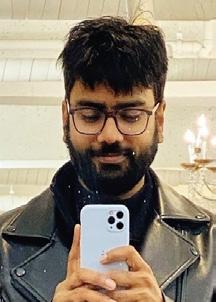
Vibhanshu Maurya, originally from India, is pursuing his PhD at CNU. He leads a vibrant lifestyle, driving his motorbike across the Korean Peninsula. He directed the Gwangju Hikers group and used to create podcasts that explored the challenges of residing in Korea and strategies for overcoming them.
By Chung Hyunhwa
Itruly think the Danggeun app, known internationally as Karrot, should receive a Most Environmental App Award. It is a usedgoods market app that almost everybody uses now after its launch in 2015. I read that it had financial difficulties until 2023 because it is a free app. It survived, though. Not only did it survive, but it is now running in the U.K., Canada, Japan, and the U.S. as well. It is loved by people because it shows the items near you, as its name means “Near You Market” (당신의 근처 마켓), so it was a paradigm change. Before, people would have to stop by the used goods shops one by one, not knowing what they may encounter, or search on nationwide online used-goods markets. But it was hard to find things near you. The Danggeun app successfully scratched people’s itchy spot.
Not only is it convenient and efficient, it is also quite environmental. It tremendously improves the reuse of goods and saves energy that would be needed for traveling. On the app, you can find almost anything. It is a virtual flea market where things are “a click away.” On the app, people can easily find things that are in decent shape and at very low prices. They can sell anything or share things that they do not need any longer. It has saved a lot of usable things from going to the landfill or the incinerator. I really think Danggeun deserves to receive a big applause for that.
From the perspective of carbon reduction, reusing is much more effective than recycling. Until 2010, all the domestically produced soju brands as well as the beer brands had the same bottle designs, allowing them to reused each other’s bottles. Therefore, the bottles were repeatedly used at least 7 to 10 times without much effort. Now,
due to the competition, the bottles come in many different designs, which may be pleasing for the consumers, but it certainly makes the reuse of the bottles much less efficient. As you can imagine, it takes money and carbon to produce bottles, and that means we eventually pay for the designs, too.
“For a person who once wanted to become a fashion designer, this is heaven!”
How about going back to previous times? It may be good for us in times of inflation and carbon net-zero needs.
What I noticed lately is that there are many more vintage shops than before as shown in the map. I have watched documentaries and written about clothes sent from Korea to Africa that ended up becoming trash and creating pollution there. The increase in the number of used-clothes shops is a positive thing. I think it is evidence that more people are paying attention to the clothes trash issue. Smart consumers know how many good clothes that are almost new are being thrown away and choose to find treasure from those shops. The prices are irresistibly low compared to new clothes, so they know that it is good for their pockets as well.
The used clothes in the market consist of imported clothes and domestically collected items as well. Because these clothes are imported in containers
at a very low cost, the best items are selected at the port, and these clothes come into the market. The rest may go to other countries at an even lower cost. The domestically collected items are from the clothes donation boxes at almost every street corner.
I am surprised by the low prices and decent quality of clothes at vintage shops. I used to buy basic items only, so I could wear them no matter what fashion trends arrived. But at the vintage shop, the low prices make me more daring to choose items beyond basic. Since some items are from other countries, you can discover unique finds. For a person who once wanted to become a fashion designer, this is heaven!
For our expat friends who may stay in Korea for a fairly short time, these shops certainly are reasonable places to check out. For these reasons, there are many used-clothes shops in Wolgokdong in Gwangsan District, where a lot of foreigners live. Also, near the Asia Cultural Center downtown, quite a few are scattered around Chungjang Street and in the nearby Geumnamro Underground Shopping Center. Tokyo Juice shops are well known, and there are many more. I also go to Jaco Vintage near Lotte Department Store. Searching on a digital map for “vintage” (빈티지 or 구제) and checking the places near you is highly recommended for treasure hunting.
Vintage shops have fitting rooms, so you can take time to find what absolutely suits you. What

I also like about going to vintage shops is that what these places carry are free of the harmful chemical smell of new clothes. So, you do not have to wash the clothes after purchasing them, which is an important reason for me to shop there. I love the fact that we can spend less money to become more environmental and healthier!
Another type of shop that is worth mentioning are Beautiful Stores (아름다운 가게). They are a nationwide NGO, and there are a few in Gwangju as well. These stores actively take donated used/new clothes and various other items. The donation is calculated into a monetary amount and reported to the tax office for donation, and it works for lowering your tax payment. So, try taking your unneeded clothes and miscellaneous household items to a Beautiful Store and feel good about yourself for donating them. The workers there are all volunteering their time, and the money goes to public campaigns, social enterprises, and environmental issues.
When I was little, a lot of people used goods until they could no longer be used. People wore clothes until they were worn out. Now, I hear Zara, H&M, and other low-price clothes businesses are hot because of Instagram. It is convenient to order clothes online by making just a few clicks on the phone and there are even apps that sell used designers’ clothes, but how about trying on some clothes at the vintage shops near you first? You will have pleasant surprises, realize happiness is not directly proportional to the sum money, and you can also do something towards achieving carbon net zero.

The Author

Chung Hyunhwa, a native of Gwangju, recently worked for a local horticultural company. She led the international eco-hike group Gwangju Hikers at the GIC in 2020 and 2021. Previously, she taught English at Yantai American School and Yantai Korean School in China and worked in school administration at Branksome Hall Asia in Jeju. She holds a master’s degree in TESOL from TCNJ in the U.S. and has a license to teach Korean. She loves plants, birds, and repurposing items creatively.
By Dhivyaa S. P.

Usually, I do a volunteer camp during summer vacation. Only one. But this time, maybe because of the built-up stress and lack of outdoor activities for more than four months, I thought, “Why don’t I sign up for a couple more volunteering camps?”
And that’s how I found myself in Naju, learning the art of natural indigo dyeing.
Day 1: The camp began with an introduction to the program and a thoughtfully prepared welcome kit consisting of two T-shirts, a long pair of pants, a sun hat, arm sleeves, boots, and all the essentials we’d need for our days in the field. After signing the personal forms, the excitement slowly settled in; the adventure had begun!
Day 2: After an early breakfast, we headed straight to the indigo fields. We harvested the fresh leaves, splitting them into two batches. One went into large vessels with water to ferment for a couple of days, while the other half was pounded with ice into a fine paste. From this,
we extracted pure indigo water. The real magic happened when we dyed white silk shawls. Dipping them into the liquid, we watched as the fabric transformed from pale green to stunning shades of blue upon oxidation. After washing the shawls nearly a dozen times, we left them to dry under the afternoon sun. The rest of the day was reserved for self-exploration and laughter over evening games.
Day 3: The chilly morning called us to the fields early. After another harvest and a hearty breakfast, we explored a small dyeing museum showcasing beautifully crafted indigo pieces. In the afternoon, we joined a fun rubber stampmaking session using indigo leaves, followed by T-shirt dyeing. Later, a few of us wandered through the quiet village streets, swapping stories about our home countries and lighting sparklers as the night set in. One of those simple, perfect summer moments.
Day 4: The morning introduced us to a different dyeing technique using persimmon extract. The
smell was pungent, and I tried my best not to gag while working alongside cheerful grandmas dyeing a blanket. Afterward, we learned how to make kimbap from the elders, finally unlocking the secret: extra-sticky rice. Post-lunch, we returned to the vessels to stir the fermented indigo mixture, a task that was as exhausting as it was rewarding. The day ended with crafting dolls for a local dog shelter while sharing random conversations and endless giggles.
Day 5: A day before we say our goodbyes. We explored Naju’s historic treasures with a tour guide, starting at Geumseong Hall and Naju Moksanaea, now open as a traditional hanok guesthouse. For lunch, we savored Naju’s famous beef bone soup; then we visited a quaint café known for traditional Korean snacks, from mugwort rice cakes to oranda puffed treats. (For more on this, see D’s Café Column in this issue!) The evening was filled with heartfelt letters exchanged between camp members. A beautiful reminder of the friendships forged.
Day 6: After breakfast, we packed up and bid farewell to our temporary home, carrying with us the scent of indigo, the warmth of new bonds, and the peacefulness of Naju’s countryside.

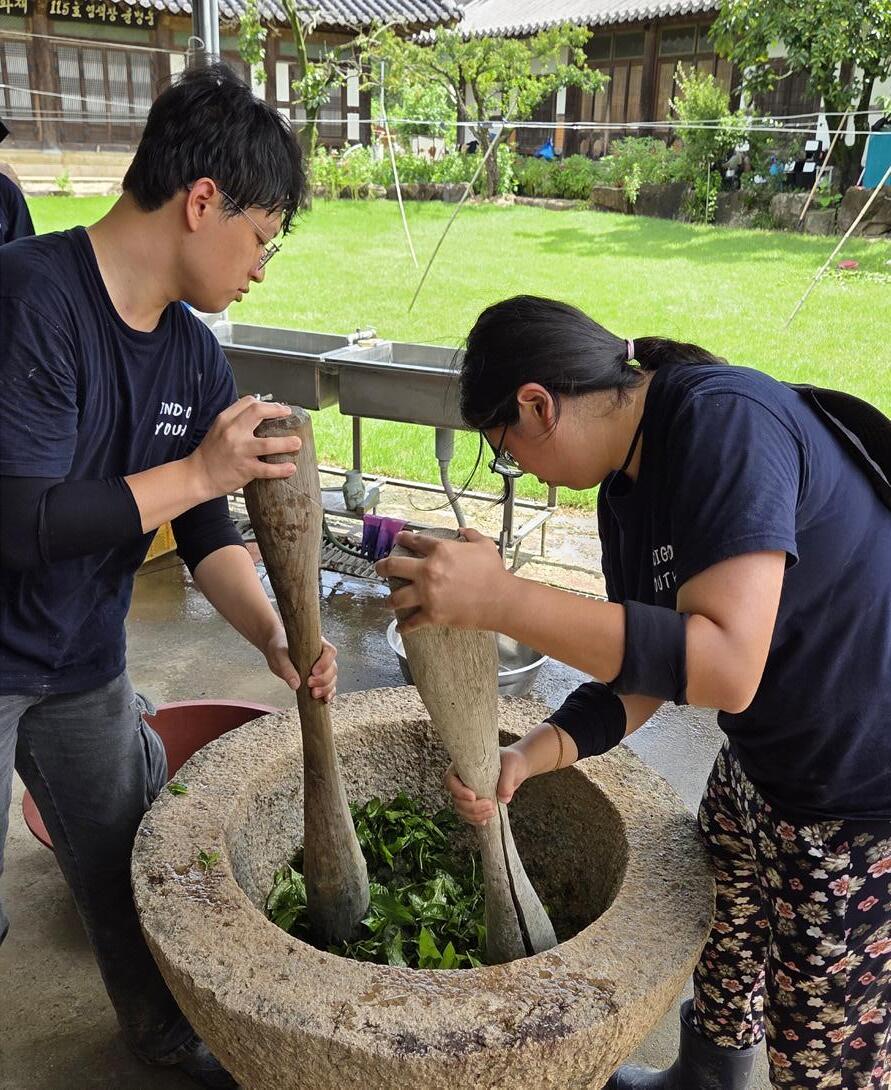
Pounding.
After spending six days learning the art of natural indigo dyeing, I sat down with the program organizers to talk about their vision, the experience, and what makes this place so special.
Q1: When did this program begin?
A: The program is part of the Jeonnam Youth Village Project. Naju Youth Village was officially selected on November 26, 2024, and we began running programs in May 2025. We offer three types of programs: one-day, 1-night 2-days, and our immersive “Cheongbit Sari” stays (5 nights 6 days or 9 nights 10 days). Activities will continue until November this year, with the project running for two years in total.
Q2: What can I learn from shorter programs?
A: Besides the 5-night stay, we also offer a one-day program and a 2-day 1-night program. They’re perfect if you just want a hands-on introduction to indigo dyeing without a long commitment.
Q3: How can people sign up?
A: Registration is handled via our Instagram account: @indigo_youth_nj Early morning harvest.
This year, our 6-day 5-night program is already fully booked, but we’ll host two one-day programs in September and October. Keep an eye on Instagram for updates and application periods!
Q4: Can kids join the program?
A: Currently, we’re focusing on young adults aged 19 to 45. Our goal is to create a youth-driven community, so participation is limited to that age group.
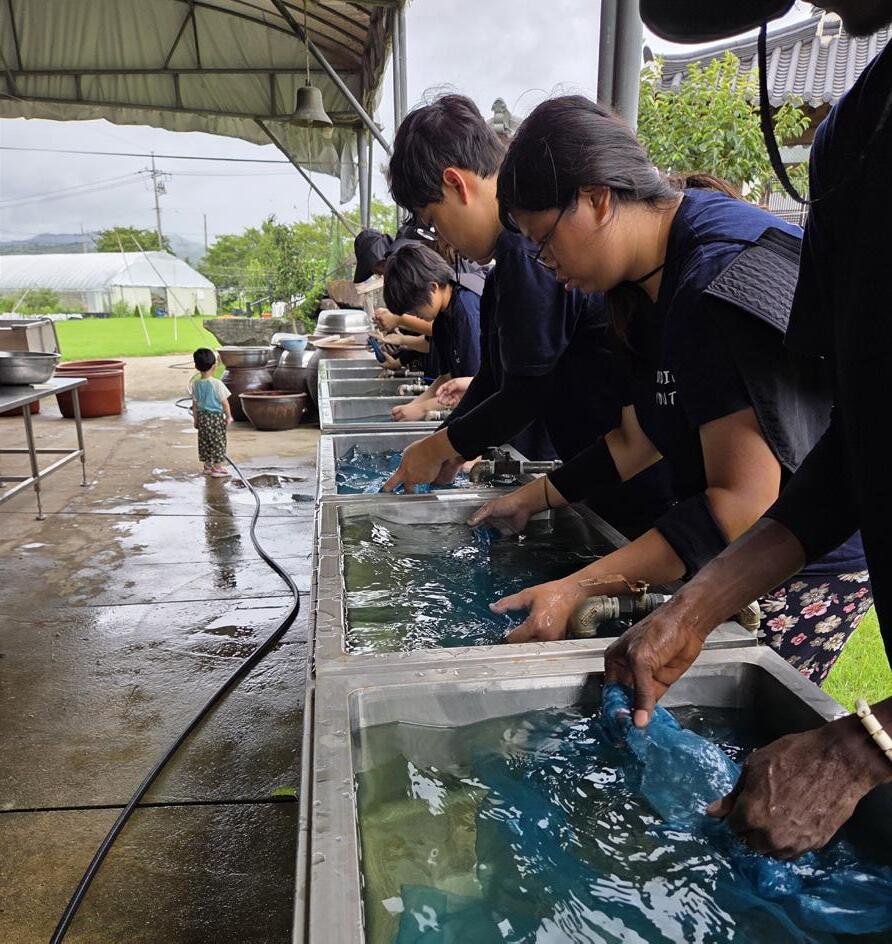
Q5: Do you have any memorable guest moments to relate?
A: Oh, so many! One that stands out is watching participants gather around the dyeing vats under the hot midday sun, debating shades of blue and sweating together while stirring the pigment known as danggeure-jil (당그레질). It’s always moving to see everyone deeply invested in both the craft and the community.
Q6: What’s your favorite part of running this project?
A: Meeting passionate young people from all walks of life. Together, we harvest indigo, make dye from scratch, and create a space where traditional dyeing stays alive through collaboration and shared energy. It’s inspiring to watch new friendships and creative ideas bloom here.
Q7: What message would you like to share with future participants?
A: Naju Youth Village is more than just a dyeing camp. It offers young people a chance to live, work, and connect with the local community. Through our workshops, we pass down the craft of natural dyeing, explore its symbolism and heritage, and create opportunities for entrepreneurship and self-reliance. It’s about preserving tradition while building a vibrant, sustainable future together.
This wasn’t just a volunteer camp. It was a week of learning, connection, and rediscovery where simple acts like pounding leaves, sharing meals, and swapping stories stitched together an unforgettable summer.



Dhivyaa S. P. believes that every action, no matter how small, contributes to the bigger picture of change. Now beginning chapter three of her academic life, she steps into her PhD journey with curiosity and resolve, knowing that each page she turns brings her closer to shaping new knowledge for the world.
By Luis Andrés González
The 2025 Design Biennale opened its doors on August 30, and after interviewing the artistic director [see Gwangju News, September issue], I couldn’t wait to visit as soon as it opened. Needless to say, this year’s edition absolutely delivers on its promises.
The theme of this year’s Gwangju Design Biennale is “You, the World.” It highlights inclusive design as both the present and the future of the tools we use every day, reminding us that the reason behind it all is, quite simply, us. From our homes to our means of transportation, cleaning, and
basically everything that surrounds us, there is always a way to make it more accessible for everyone – and this Biennale proves it.
We often forget that many things we take for granted in our daily lives were originally born from someone’s need and someone else’s care and creativity. Living together in a diverse society is what pushes us toward new ideas and tools. It is us, in this world.
The 2025 Design Biennale showcases both the history and future of inclusive design. It Everything was once a solution for a need.
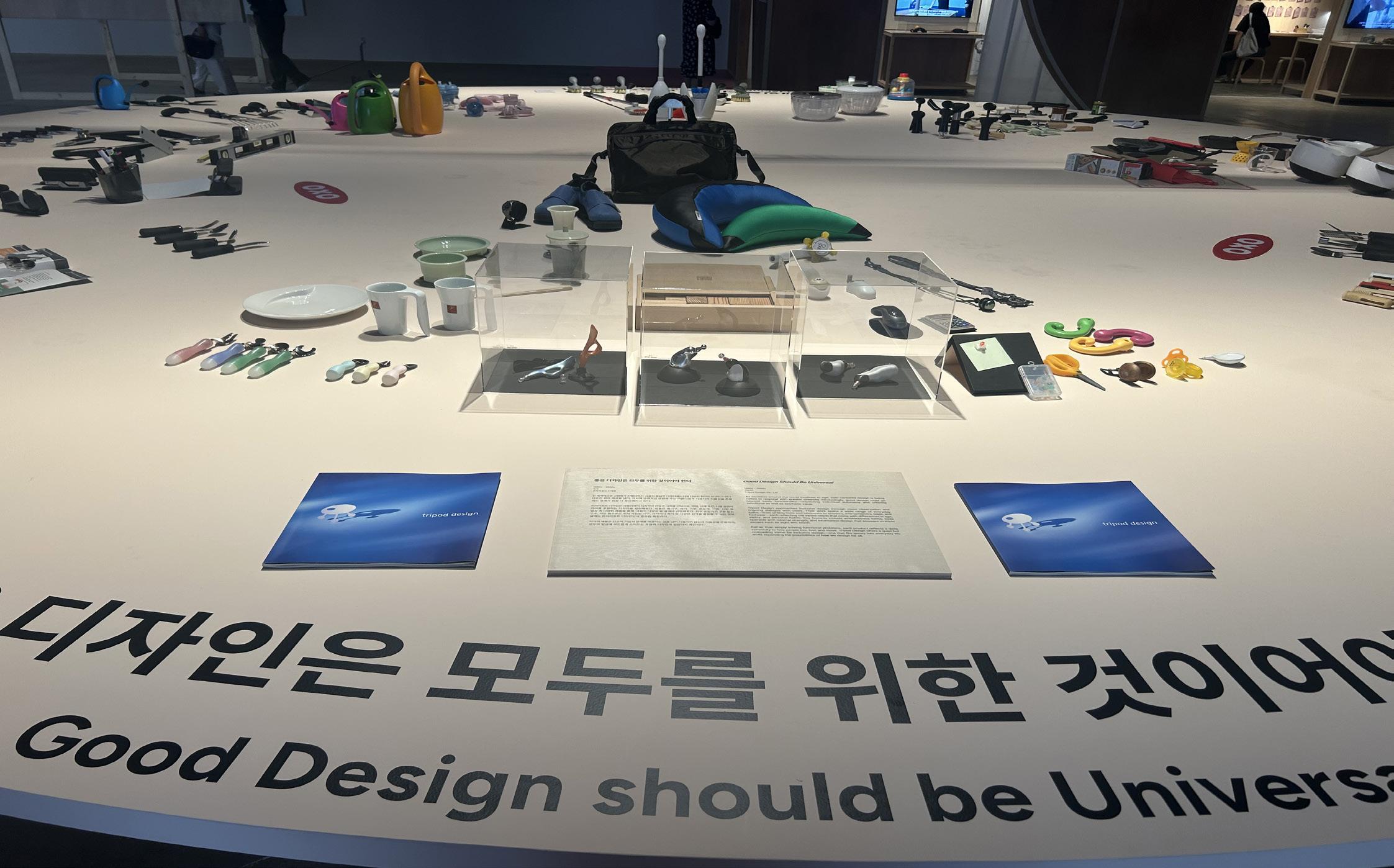

highlights advances in hubs around the world and in Korea, including universities that might catch the eye of anyone interested in studying inclusive design. The exhibition also carries a strong message of inclusion: from LGBT communities to people with disabilities, to those navigating emotional and mental health challenges, and even something as simple as making life easier for left-handed people. That said, I couldn’t help but feel that health for those at every size has not yet found its rightful place in this perspective.
The exhibition is also fun. It has great photo spots – perfect for friends, families, and couples – and plenty of interactive experiences. You can test smart home appliances, try a driving simulator, or even play drone soccer. It’s sensorial, too: Visitors can briefly experience what it feels like to be visually impaired, color blind, or hard of
hearing, or simply enjoy a glimpse of what parks of the future might be like.
My recommendation? Put on a fabulous outfit, stay hydrated, and go to the 2025 Design Biennale. You’ll get an amazing mix of art appreciation, playful interaction, serious reflection on inclusion, and a sneak peek into the future.

The Author
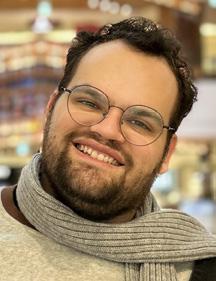
Luis Andrés González is a Mexican Global Korea Scholarship scholar and master’s degree student in cultural anthropology at Chonnam National University. He advocates for LGBTQ+ rights and gender equality, and explores global affairs through pop culture. He is the founder of Erreizando, a digital magazine. Instagram: @luisin97 / @erreizando
Photographs by Luis Andrés.
By Muthukumar Elangovan
Every act is a tiny battle. Like getting an elevator from the top floor, darting out of the office, and making it to that subway train – even though there’s another one in five minutes. But no. I must reach my nest as early as possible. It’s irrational, but this irrationality drives the logic of rush hour survival.
Getting into the train car isn’t the final goal – it’s merely the first crucial victory in the war that is the daily subway commute.
Let me explain for those blessed souls who’ve never experienced it.
As soon as the gate opens after I tap my metrocard, I run like a sheep set loose – no purpose, just panic masked as routine. A sheep on the outside, but inside, a burned-out salaryman chased by capitalism. I sprint down toward the platform with the urgency of someone chasing meaning, but really, I’m just chasing a place to stand.
As you step onto the platform, you line up politely. You might even feel calm. But then you hear it – that deep thudding underfoot – the train approaching. Your heart rate spikes just slightly. You must get in. Especially if you’re at the back of the queue.
When the train arrives, you don’t worry about brushing past people or shouldering through because you’re already mentally prepared to dodge the people who morph into statues in front of the door. The ones who never move, no matter how many people need to enter or exit.
Now comes the real question: Where to stand?
Do you squeeze into the middle and hover in front of someone already sitting, hoping they’ll get off soon? Or do you park yourself among the immovable statues near the doors?
The answer depends on your destination.

If I’ve got just a couple of stops to go, I become a statue too – frozen, immobile, spiritually dead inside. But if I’m in for more than a 30-minute ride, I transform into a subway bull – muscling into the crowd, looking for that tiny human-sized gap where even chopsticks would feel cramped.
Then there’s the most frustrating game of all: standing in front of a seated person and hoping – praying (yes! I become religious here) – that

they’ll get off at the next station. It’s a daily act of involuntary gambling.
You scan for signs: Do they fidget? Do they turn off their phone? Are they eyeing the station map? Each minor movement is a glimmer of hope. But more often than not, they’re just checking their own existence.
And that’s when the slow descent begins – your back starts to ache, your resentment bubbles. You begin cursing the universe, the city, your job, your life choices, the DNA that brought you here. Even the reflection of the beautiful woman beside you becomes a source of irrational hatred. You hate yourself for looking at her reflection, and then hate her more when she, having entered after you, lands a seat before you.
This is when the big questions hits: Why is life so unfair? Why does everything run on chance? Are we really living in a deterministic world ruled by chaos?
But then… a miracle. A seat!
Suddenly, I’m sitting. Possibly next to the same beautiful woman, not daring to look at her now.
I stare at my phone like it contains the secrets of dark energy and matter. And just like that, my ordeal sublimates, my world changes. Everything is cheerful now. I feel like I’m in the greatest city
on Earth. My weekend plans bloom in my mind like cherry blossoms after a long, dry winter.
Now, I’ve become what I once despised: the guy warming the seat, oblivious to the poor soul now standing in front of me, hoping I’ll move.
Just as I begin to fully enjoy the simple pleasure of sitting in a subway seat, a halmeoni – as if summoned by fate – appears.
Oh no!
How can I let this elderly lady stand while I warm this seat?
This is when that small act of kindness kicks in – that which I learned from many kind souls throughout my life. I hide my exhaustion, and with pleasant face (I presume I can muster that up!), offer my hard-gotten possession...
“Anjeuseyo” (Please sit down).

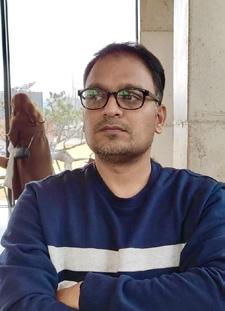
Muthukumar Elangovan is a naturalist who recently traded Gwangju’s calm for the buzz of Seoul, though he still misses Jeollado’s charm. He enjoys nonfiction, wandering in nature, trying new foods, and occasionally blogs about poetry, short stories, and the quiet beauty of everyday life. Email: pentomuthu@gmail.com
Photographs by Muthukumar Elangovan.
Reviewed by Michael Attard
The Plotters
By Un-su Kim
304 pages, Doubleday, 2029
ISBN-10: 0385544383; ISBN-13: 978-0385544382
The setting is early 21st-century South Korea. The main character of this crime fiction, from whose point of view the story is narrated, is Reseng. Reseng doesn’t fit into the stereotypical role of a protagonist. As far as antagonists go, it’s a long list. This is primarily a story of corruption. The plotters at the top of the food chain, the assassins at the bottom, and the other bad guys in between are merely chess pieces confined to the squares on the board, destined to be moved or swept away by a hand from above.
Reseng is an assassin, and the story goes that he was found at birth in a garbage can. He was then raised by an assassin named Old Racoon, who lived and worked at a library. This is the rationale for how Reseng became an assassin. Growing up in a library explains his penchant for books. This is even though he never went to school and was not encouraged to read – in fact, discouraged, by Old Racoon. In this way, the reader is drawn in to have empathy for Reseng. Add in the fact that he has two cats, which he lovingly cares for, creating a likable assassin – at least on the surface.
We meet Reseng as he is looking through the sites of a gun pointed at the chest of an old man. The presumed target is watering his garden and playing with his dog. Why Reseng doesn’t pull the trigger is debatable. But as fate would have it, the elderly man discovers him. They chat and the old man invites Reseng to dinner, and even to spend the night. The following morning, Reseng leaves, climbing back up the hill to where he was
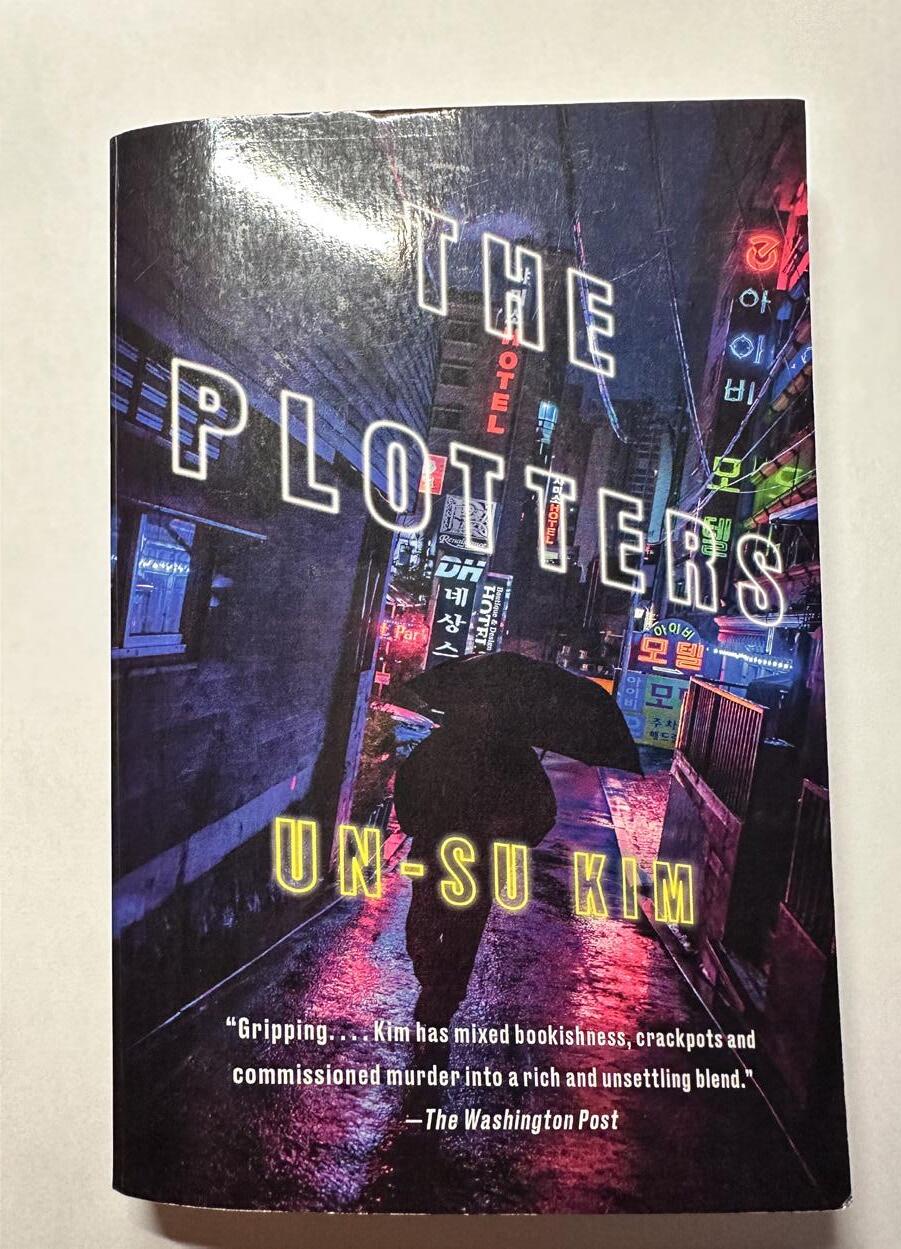
the previous day. “Reseng fixed the crosshairs on the old man’s chest and pulled the trigger.”
A lot of people are killed in this story and some readers may find the vivid stab-by-stab action of numerous knife fights to be gruesome. The job and the fact that the assassins themselves in turn will eventually be killed, puzzlingly, doesn’t encourage them to escape. As Reseng puts it, “In the end, none of us can leave the place we know best, no matter how dirty and disgusting it is.”
At one point early in his career, Reseng did have an excellent chance to escape. He was hiding out in a different city under an assumed name. He
had a job and even met a wonderful young lady who loved him. Old Racoon gave him the option to either return to Seoul or to make something different of himself. He chose to resume his life as an assassin.
The plotters were always very particular as to how they wanted someone murdered. And this business wasn’t just bad guys knocking off other evil villains. Reseng was sent to kill a very young, petite prostitute, who was assumed to know too much about some powerful guy. He was told to break her neck. There are eight pages of conversation between them where the reader is hoping that Reseng will let her go. That was not to be. Although, Reseng, with his own form of mercy, did allow her to take pills. But, he was in trouble, once again, for not sticking exactly to the plotter’s wishes.
Having dissatisfied a few people, he is not totally surprised when he finds a bomb in his toilet. One of the book’s plots thus revolves around Reseng trying to find out who is trying to kill him. He goes to the “Meat Market.” “Nothing there was forbidden by law, justice, or morality.” A second plot emerges when Reseng learns that Hanja, another very bad guy, is going after Old Racoon’s “assassin for hire business.”
A woman named Mito is tracked down, but Reseng can’t believe that she is a plotter, let alone an assassin. It turns out that she is involved in both of the above-mentioned plots. Her plans include a special role for Reseng. When he confronts her, telling her how easy it was to track her down, she responds, “You didn’t find me. I summoned you.”
Mito, Reseng, and other characters sometimes exhibit what might be seen as normal personality traits. There are certain bonds of friendship, although it’s more along the lines of the quip: “With friends like you, who needs enemies?” There is even a hint of loyalty here and there. But basically, no one trusts anyone, and they all expect to be betrayed. Revenge and personal gain play their part. But overall, the most depressing shared characteristic is the fact that they accept their roles and fate. They can be witty, but always

underlying their thoughts and actions is a dark cynicism.
More people are cut up and killed. At one point, Reseng tells Mito that he is going to kill her along with two other people. She responds with an assassin’s nonchalant wit, “In that case, kill me last please. I have a lot to do.” But when Reseng barely survives a brutal knife fight, it is Mito who keeps him alive.
Eventually, Reseng is on side with Mito’s plan to bring the whole house of plotters down. However, he never really believes that her plan will be successful. In the finale, a lot of knee caps are shot out. Perhaps a sign of an underlying morality. Then we are left with a summary. “The life of an assassin was like cigarette smoke – too hazy and indistinct to settle anywhere.”

The Author Michael Attard is a Canadian citizen but has lived in Gwangju for over twenty years. He has taught English as a second language in academies and within the public school system. He is officially retired and spends time reading, writing, hiking, and spending time with friends.

Photographs by Michael Attard.
By Dhivyaa S. P.
Last month, during my indigo dyeing camp in Naju, I stumbled upon a charming café that has become a local treasure for lovers of traditional Korean snacks. Tucked away on a quiet street, this cozy spot offers a nostalgic journey through Korea’s culinary heritage, featuring yakgwa (deep-fried honey pastries), sikhye (sweet rice drink), oranda (sweet puffed rice snack), and an array of beautifully crafted rice cakes.
The daltokki (달토끼) part of the café’s name literally means “moon rabbit,” from the children’s story of a rabbit who sacrificed itself and whose image was then projected onto the moon with a mortar and pestle, pounding rice for rice cakes. What makes this café even more special is its Naju twist. Since the region is famous for its juicy, high-quality pears, most of the snacks here are made using pear juice instead of refined sugar. The result? Delicacies that are subtly sweet, refreshingly light, and absolutely unforgettable.
The moment you step inside, you’re greeted by antique dolls, paintings, and old books, lending the space a vintage charm, while lush green plants breathe life into every corner. It’s the kind of place

where time slows down, inviting you to sip, savor, and simply be.

• Sikhye – Naturally sweet and refreshing, perfect after a hearty meal.
• Rice Cakes – Soft, chewy, and delicate, they pair beautifully with tea.
• Oranda – Crunchy puffed rice clusters coated in just the right amount of sweetness.
After enjoying Naju’s famous beef bone soup, this café makes the perfect stop to wind down and indulge. Whether you’re a foodie, a culture enthusiast, or simply someone seeking a moment of calm, this hidden gem offers a taste of Naju’s traditions.

Location: 20-6 Geumseong-dong, Naju, Jeollanam-do
Business Hours: Daily 9 a.m. – 9 p.m.
The Author
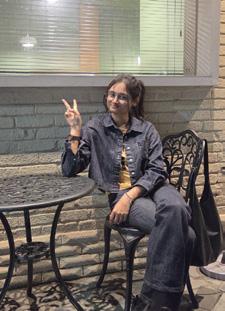
Dhivyaa is drawn to Korea’s café culture, often finding comfort in quiet corners where she can reflect, observe, or simply get lost in her research over a warm drink.
by Dhivyaa S. P.
By Diego Teixeira Setton
To this day, the most-spoken topic between me and my dad is football. He won’t admit it, but making sure I grew up supporting the same team as him was as important as me getting good grades at school, and I am sure many others youngsters in Brazil had the exact same experience while they were growing up.
Being so involved with a sport from such a young age naturally allows it to develop into a passion. Your football team is almost a key part of your personality. You can find intense discussions about the latest match almost anywhere you go: at bars, in schools, at restaurants, on taxi rides, in lines, etc., someone will be talking about football.
The best part about football was always going to see a match at the stadium; nowhere else have I seen anything close to the atmosphere created by the fans. In Brazil, no one watches the match sitting down. Even before getting to the match, people are already singing and jumping outside the arena – sometimes holding flares, too!
Inside, organized fan clubs (torcidas organizadas) are responsible for setting the tone. They prepare huge banners to show off at the matches, bring drums to aid in the cheering, and sing many songs throughout the 90 minutes of the match –only stopping to celebrate a goal or to curse at opposing players and the referee (and sometimes their own players, as well).
However, at the same time, passion can provide an amazing atmosphere and support; it can also bring out the worst in people (the amount of alcohol usually consumed during football
matches doesn’t help). Organized fans have the unfortunate reputation of being seen as extremely violent, often even compared to organized crime. And it is true, members of these fan clubs can become overly aggressive. Protests and harassment of players when they don’t perform can get pretty serious, and fights between rival fans are not uncommon – even leading to deaths. It got so bad that rivalry matches in my city are only allowed to admit fans of the home team, as fights broke out so often that authorities weren’t able to control the violence.
Still, going to the stadium back home is an unmatched experience. Being able to shout, cheer, and jump to your heart’s content, all while celebrating or cursing together with a complete stranger sitting next to you, as if they were a

member of your family, is unparalleled. There has not been one time that I have left a match without losing my voice. Being a fan in Brazil is almost like being the twelfth player on your favorite team. Home support really matters.

I was a bit disappointed when watching sporting events while living in the United States, as they felt more like entertainment than passion. The games felt almost like an afterthought, and fans of all the teams and sports were often limited to two very uninspired chants – shouting “Defense, Defense” and singing “Let’s go team” over and over again. At a Chicago Bulls basketball game that I attended, Dunking Donuts held a halftime event where you could scan a QR code and make a bet on a virtual race. A donut, a bagel, and a coffee cup would be racing, and if you picked the winner, you could win a free donut. During that short, pre-determined race, the arena was incredibly loud – louder than they had been for the whole game – and it made me quite confused.
On another occasion, I had the chance to watch a Champions League match between Benfica and Monaco, in Lisbon. While the fans there were definitely passionate and vibrant, there were still a few moments when no one would be singing, making it far from what I was used to in Brazil.
For these reasons, I wasn’t expecting much from the fans when I attended my first Kia Tigers game in Gwangju. I didn’t imagine Korean fans would be loud and passionate the way South American fans are, as it seems that you need a little bit of that third-world spark to reach such intensive levels of devotion to a sports team.
To my surprise, the fans started singing very loudly, and not only that, they also seemed to have a different song for each player that stepped up to bat. The fans kept up their intensity throughout the entire game, and even the opposing fans were able to make some noise of their own. By the end of the baseball game, the whole stadium was arm in arm, singing a song – which I couldn’t fully comprehend – prompting me to embrace my friends and try to sing along, evoking a feeling that I had only ever managed to experience while attending football matches in Brazil!
Even if it didn’t quite reach the same level of atmosphere as that created by Brazilians supporters (Korean fans are much more civilized when watching a game: They sit down in their seats and don’t take off their shirts or curse as much as people back home), Kia Tigers fans impressed me a lot with the passion they have watching their games. It was the closest thing I had experienced to attending a football match back home, and it managed to make me a fan of a new sport that I hadn’t normally watched before.
It was truly worth it, both for the memories I made with friends and for the experience of attending the baseball game itself. I will attempt to continue watching the Tigers whenever the time-zone differences allow me to, and I hope I can learn the songs for the inevitable next time I am able to attend a Kia Tigers game at Champion’s field in Gwangju.

Author

Diego Teixeiera Sutton was born in São Paulo, Brazil. He is currently studying journalism in the United States and spent the first half of 2025 studying in Gwangju. He really enjoys photography, talking about sports, and learning about new cultures.
By Zhang Jiuzhou (Julius)

The Kia Tigers, last season’s reigning champions, have plummeted from grace in a stunning collapse that has shocked the KBO. Once hailed as a “super team” poised for a dynasty, their failure this season is as profound as it is unexpected.
At the beginning of the year, all signs pointed to another dominant run. The Tigers appeared to have no weaknesses, with a formidable starting rotation, a seemingly unshakable bullpen, and a powerful lineup. Many experts considered their relief corps to be the best in the league, making them the clear-cut favorites to win the 2025 Korean Series. Their offseason saw no decline in talent, and their young players were expected to build on the momentum of their championship experience.
However, a closer look at history might have tempered those predictions. In the KBO’s 45-year history, only five teams have ever won back-toback championships, and none have done so in the last eight years. For the Tigers specifically, this decline follows a troubling pattern. Since their acquisition of the Haitai franchise in 2001, Kia has won three championships (2009, 2017, and 2024). But in each of the following seasons, they fell dramatically, finishing fifth in both 2010 and 2018. The 2025 season marks a continuation of this structural issue.
The Tigers’ struggles were far from accidental. Early-season injuries to key players like Na Sungbum (calf) and Kim Do-yeong (hamstring), along with a car accident involving Hwang Dong-ha, were a factor. Yet, baseball is a team sport, and
the Tigers had the depth to fill any void, as they did during their championship run last year. In fact, their reserves, affectionately dubbed the “Hampyeong Tigers,” stepped up in June, going 15-7-2 with a .682 winning percentage and closing the gap on the league leader.
This temporary revival gave many fans hope that the team would roar back once the stars returned. Instead, the opposite happened. The Tigers’ performance declined sharply in the second half of the season, a sign that the root cause was not injuries, but deeper, systemic problems.

The primary culprit was a failure to adapt. Head Coach Lee Bum-ho’s player-centric approach, which was lauded during their championship run, proved ineffective this season. The role of a baseball manager is often underestimated compared to coaches in sports like basketball or soccer. While their in-game influence may be less pronounced, a baseball manager's true value lies in their ability to navigate the long and grueling season. This requires a unique blend of long-term vision and flexibility.
After a championship victory, a manager must be innovative, even willing to retool the roster to prevent complacency. This can involve bringing
in new talent to create a sense of urgency and fostering internal competition among both starters and non-starters.
However, this season, Lee Bum-ho’s player-centric leadership – which was a recipe for success last year – has failed to resonate. He continued to give veterans weekly rest, even during the peak of the pennant race, and his unwavering – and perhaps misguided – trust in struggling players like closer Jung Hai-young, who is having the worst season of his career, proved costly. The team also made a questionable move by trading for veteran reliever Cho Sang-woo, who posted a 6.00 ERA and was particularly abysmal in July when the team needed him most.
More broadly, the team’s sense of urgency seemed to vanish. There was a palpable lack of tension and focus, with many pointing to a lingering “championship hangover” that extended into the offseason. According to experts, the team’s overall preparation was slower than in previous years, with key players taking longer to regain their physical conditioning and the preseason regimen lacking its normal intensity.
The team’s once-unbeatable bullpen, its very foundation, collapsed in the second half, leading to a string of demoralizing blown saves. This led to a complete loss of morale and a freefall to the bottom of the standings. Ultimately, the Tigers’ failure was not a matter of bad luck or circumstance, but a structural breakdown of a team that failed to evolve and maintain its competitive edge after reaching the pinnacle of the sport.

The

Author Zhang Jiuzhou (Julius) is from Harbin, China. He began writing in 2022 and has contributed to the Chinese media in Gwangju. He concurrently serves at a sports data company. He is pursuing a master’s degree in media and communications and is responsible for the Chinese Students Association at Chonnam National University.
By Zhang Jiuzhou (Julius)
Kia Tigers: Kim Do-yeong Out with Injury, Wisdom Fails to Rebound

Aheadof the foreign-player replacement deadline on August 15, the Kia Tigers considered parting ways with Patrick Wisdom. While his numbers seemed respectable, he failed to make an impact in crucial moments, and his performance slumped even further in the second half. The club ultimately kept him, believing it was wiser to wait for a rebound than to replace him midseason – an especially difficult adjustment for any newcomer to a foreign league.
That decision has proven costly. Even free from replacement pressure, Wisdom never regained form, managing only five home runs – his lone strength – while posting a poor batting average since August 16. During this stretch, Kia slipped out of the top five.
Meanwhile, the Tigers have decided to shut down star infielder Kim Do-yeong after a follow-up hospital exam showed his hamstring has not fully
healed. “It’s a wise decision,” a team official said. “Despite the pressure to win, we’re prioritizing his health.”
Those close to Kim say he would have pushed to return this season out of responsibility to the team, but many believe it’s better to address the issue calmly and target a full recovery for next year. Known for his explosive athleticism and sprint speed, Kim has suffered three injuries this year, suggesting his body has yet to fully adapt to his elite physical potential. Coaches remain confident that, because of his youth, he can regain his form.
The focus now turns to building a comprehensive training plan ahead of spring camp in February, with some even urging caution about next year’s World Baseball Classic. Losing a talent like Kim so early would be a major blow to both the Tigers and South Korea baseball.
Kim will close the 2025 season with a .309 batting average (34 hits in 110 at-bats), 7 home runs, 9 doubles, 27 RBIs, 20 runs, 3 stolen bases (0 caught stealing), 10 walks, 23 strikeouts, a .582 slugging percentage, a .361 on-base percentage, a .943 OPS, a .294 average with runners on base, and a 1.000 pinch-hitting average over 30 games.
Having fallen short in last year’s semifinals, Gwangju FC have stunned the competition
this year, defeating Bucheon FC 4–1 on aggregate to reach the Korea Cup final for the first time, despite missing several core players.
Their opponent in December’s final will be Jeonbuk Hyundai FC, runaway leaders in K League 1 this season under Gus Poyet, who have set a record unbeaten streak while also juggling the AFC Champions League. Gwangju have gone winless (0–1–2) against Jeonbuk this season, but every meeting has been fiercely contested.
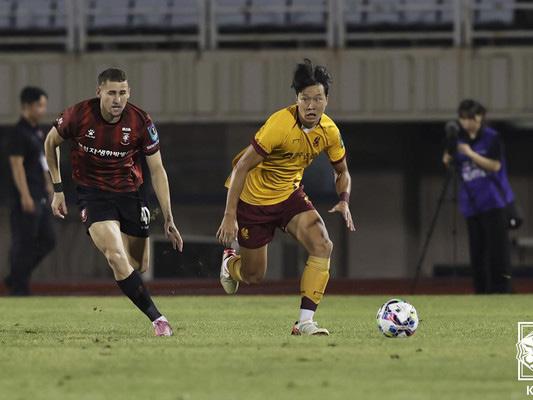
Gwangju FC advances to Korea Cup final after defeating Bucheon FC. (Korea Football Association)
With Jeonbuk balancing multiple competitions and the one-off final set for December 6 at Seoul’s Sangam Stadium, the outcome is hard to predict. Gwangju are determined to claim the Korea Cup title, which comes with an automatic spot in next year’s AFC Champions League.
As last year’s only Korean quarterfinalist in the ACL, head coach Lee Jung-hyo said, “Of course we want to return to the ACL, and the players feel the same. To achieve that, we have to win this final.”
Gwangju FC continues to make history under head coach Lee Jung-hyo. Now, the club is eyeing its first-ever Korea Cup title, a victory that would be a much-needed financial boost to help pay down its debts. The recent 1.4 billiondollar transfer of star player Jasir Asani to Iran’s Esteghlal FC has provided some temporary relief, but Gwangju FC’s financial struggles are far from over.

Shimamura Haruyo, selected as the Asian foreign player for the 2025–26 season, arrived at Gimpo International Airport on September 12 and immediately traveled to Gwangju to join the AI Peppers.
Shimamura began her professional career with the NEC Red Rockets in 2010 and represented Japan at the 2016 Summer Olympics in Rio de Janeiro and the 2020 Summer Olympics in Tokyo. She also earned a silver medal at the 2022 Asian Games in Hangzhou. Her arrival, initially planned for July 1, was delayed due to her commitments with the Japanese national team at the FIVB Volleyball Women’s Nations League and the FIVB Volleyball Women's World Championship. Following Japan’s run to the semifinals at the Worlds, she has now officially joined the AI Peppers.
At 33, the veteran middle blocker is expected to contribute both defensively and offensively. “I’m grateful for the support from Korean fans during the World Championship,” Shimamura said. “I’ll work hard with my teammates and adapt to the team as quickly as possible.”


Zhang Jiuzhou (Julius) is from Harbin, China. He began writing in 2022 and has contributed to the Chinese media in Gwangju. He concurrently serves at a sports data company. He is pursuing a master’s degree in media and communications and is responsible for the Chinese Students Association at Chonnam National University.
Chungjang Street Festival

Dates: October 15–19 (Wed.–Sun.)
Venue: Geumnam-ro, Chungjang-ro, May 18 Democracy Square and Art Street
Admission: Free; all ages
Reservations: No booking required.
Inquiries: 062-232-1008
Gwangju Kimchi Festival

Dates: October 31 –November 2 (Fri.–Sun.)
Time: 10:00 a.m. – 8:00 p.m.
Venue: Gwangju City Hall Square
Admission: Free; all ages
Reservations: No booking required.
Inquiries: 062-613-3992

Dates: Aug. 20 – Oct. 30
Time: 10:00 a.m. – 6:00 p.m. (Closed Mondays and Chuseok holidays)
Venue: Lee Kang Ha Art Museum
Admission: Free; all ages admitted
Reservations: No booking required.
Inquiries: 062-674-8515
The ACC’s 10th Anniversary Exhibition: “Manifesto of Spring”

Dates: August 29 – January 25, 2026
Times: Tuesday through Sunday 10:00 a.m. –6 p.m.; Wednesdays & Saturdays 10:00 a.m. –8 p.m.
Venue: ACC, Space 1
Admission: Free; all ages
Reservations: No booking required.
Inquiries: 1899-5566
2025 Gwangju Design Biennale Exhibition: Rose Rabbit Salt – A Living Ritual

Dates: August 29 – January 25, 2026
Time: 10:00 a.m. – 6:00 p.m.
Venue: Gwangju Museum of Art
Admission: Free; all ages admitted
Reservations: No booking required.
Inquiries: 062-613-7100

Dates: Every Saturday, August 30 – October 25
Time: 6:30–8:30 p.m.
Venue: Cheongchunbit Pocha Plaza (next to Bitgoeul Citizen Cultural Center)
Admission: Free; all ages admitted
Reservations: No booking required.
Inquiries: 062-670-5722
Paik Kunwoo and Mozart

Dates: October 23 (Thu.)
Time: 7:30 p.m.
Duration: 100 min. (including a 15 min. intermission)
Venue: ACC, Theater 2
Ticket Prices: R Class 70,000 won; S Class 50,000; A Class 30,000
Admission: Must be 7 or older (those born in 2018 or earlier)
Reservations: ACC Foundation website, Ticket Office, Call Center
Inquiries: 1899-5566
The ACC’s 10th Anniversary Special Performance: Pansori Sirirung Sirirung

Dates: October 23–25 (Thu.–Sat.)
Time: Thursday & Friday 7:30 p.m.; Saturday 2:00 p.m.
Duration: 70 min.
Venue: ACC, Theater 1
Ticket Prices: R Class 40,000 won; S Class 30,000; A Class 20,000 won
Admission: Must be 7 or older (those born in 2018 or earlier)
Reservations: ACC Foundation website, Ticket Office, Call Center
Inquiries: 1899-5566

Gwangju City Symphony Orchestra’s 399th Regular Concert: Fall in Love with Opera
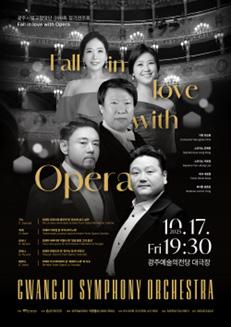
Date: October 17 (Fri.)
Time: 7:30 p.m.
Duration: 95 min. (including intermission)
Venue: Gwangju Culture and Arts Center, Grand Theater
Ticket Prices: R Class 30,000 won; S Class 20,000; A Class 10,000
Admission: Elementary school students and older
Reservations: Gwangju Culture and Arts Center website, TicketLink (1588-7890)
Inquiries: 062-613-8241

Date: October 18 (Sat.)
Time: 5:00 p.m.
Duration: 50 min.
Venue: Nam-gu Pureun-gil Park (푸른길 공원)
Admission: Free; all ages admitted
Reservations: No booking required.
Inquiries: 062-670-5723~4



Dates: October 17 (Fri.), October 24 (Fri.), and November 14 (Fri.)
Time: 12:00–1:00 p.m. / 3:00–4:00 p.m. / 7:00–8:00 p.m.
Venue: ACC, Archive & Research, B2, Asia Culture Academy 1
Admission: Free; adults only
Reservations: ACC Foundation website
Inquiries: 1899-5566, 062-601-4326
*Only one application per person.

Dates: October 31 (Fri.)
Time: 2:00–4:00 p.m. and 7:00–9:00 p.m.
Venue: ACC, Archive & Research, B2, Asia Culture Academy 1
Admission: Free, adults only
Reservations: ACC Foundation website
Inquiries: 1899-5566, 062-601-4326
*Only one application per person.

ACC Cultural Diversity Family Day is a program that offers ACC space tours and Korean traditional culture experiences in various languages: English, Chinese, Japanese, Vietnamese, Mongolian, Russian, and Uzbek.
• Event Period: September–November 2025
• Venue: Asia Culture Center (ACC)
• Target Participants: International students and foreign workers residing in Korea, multicultural family groups, Asian community and multicultural organizations, travel agencies, etc.
• Number of Invitees: Approximately 20 participants per session, with a total of 30 sessions (3 sessions per language)
Program Highlights
• Guided tours and exhibition viewing by ACC Global Docents in multiple languages
• Hanbok wearing experience
• Traditional culinary culture experience or traditional craft-making Note: Organizations are cordially invited to participate.
Application
• Period: September 3 – November 23 (Apply at least 7 days in advance.)
• How to Apply: Apply via the ACC Foundation website’s News Notice Board. From there, submit through the Naver form.
• Inquires: 070-4239-5040 (Mon. to Fri. 10 a.m. to 6 p.m.)
• Email: acc_specialtour@naver.com; tyche7@korea.kr

Compiled by Charlene Lee.
Charlene Lee is the founder of Charlene English Institute. Having lived in many different countries, she loves to explore and experience diverse cultures. She hopes to contribute to making Gwangju a more vibrant city.

